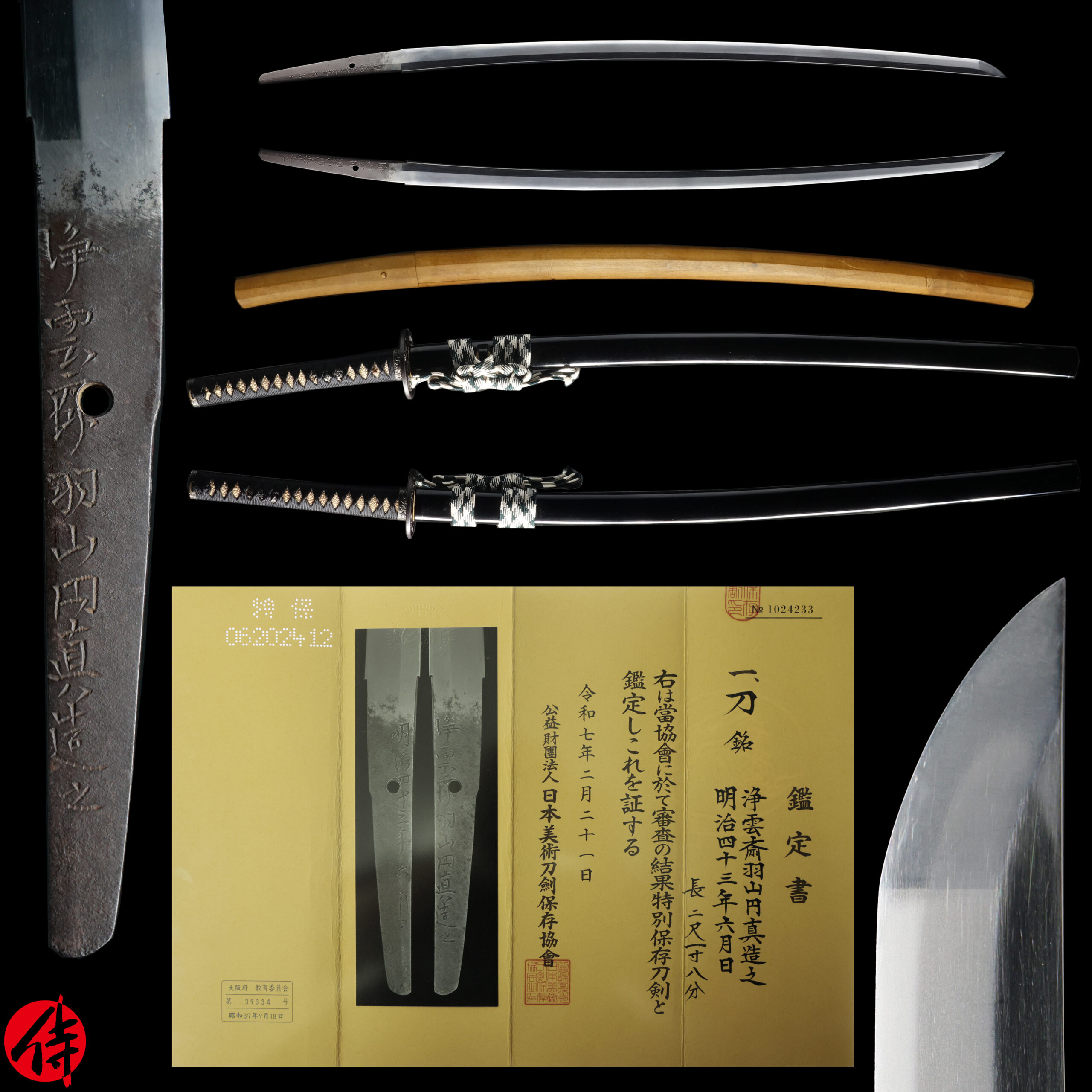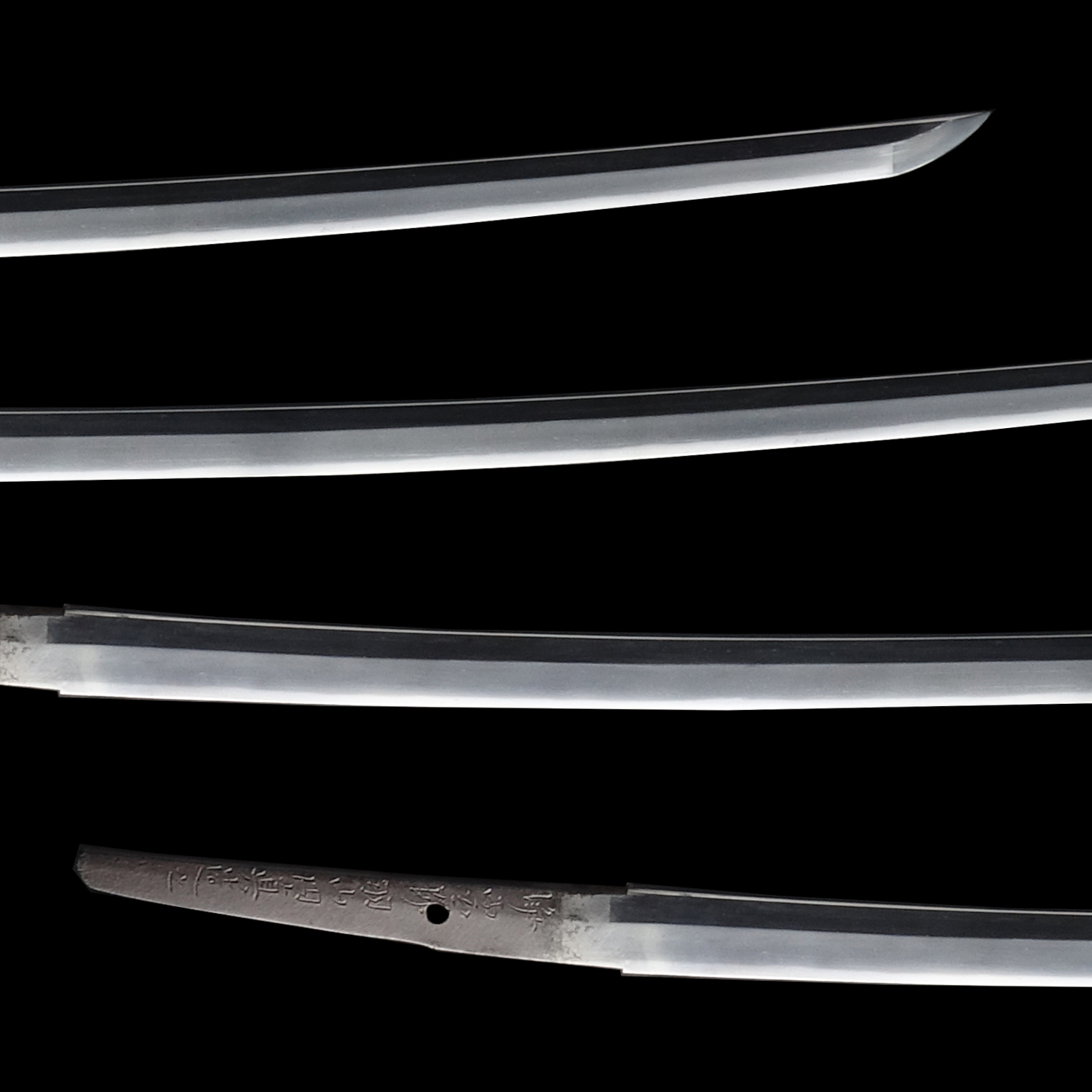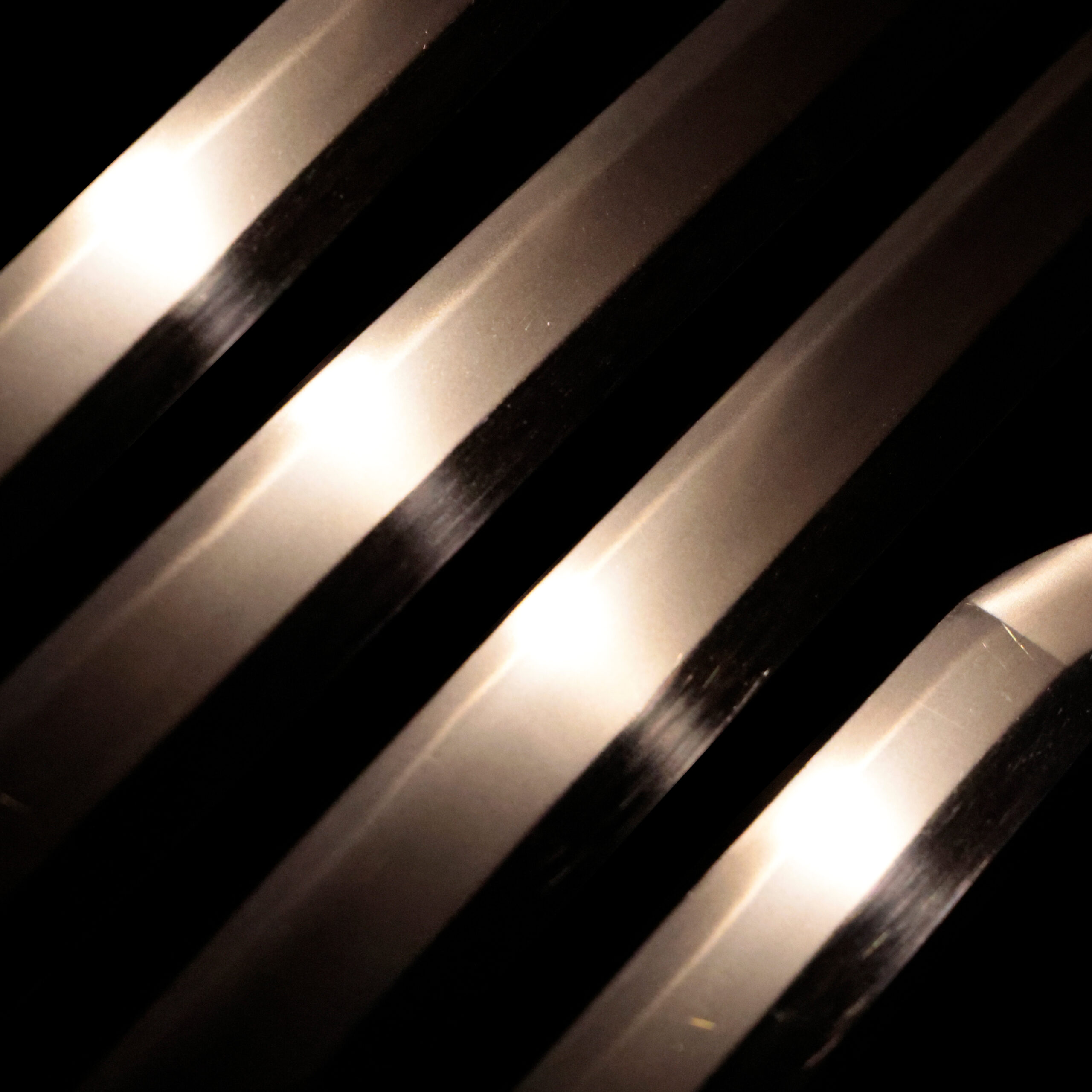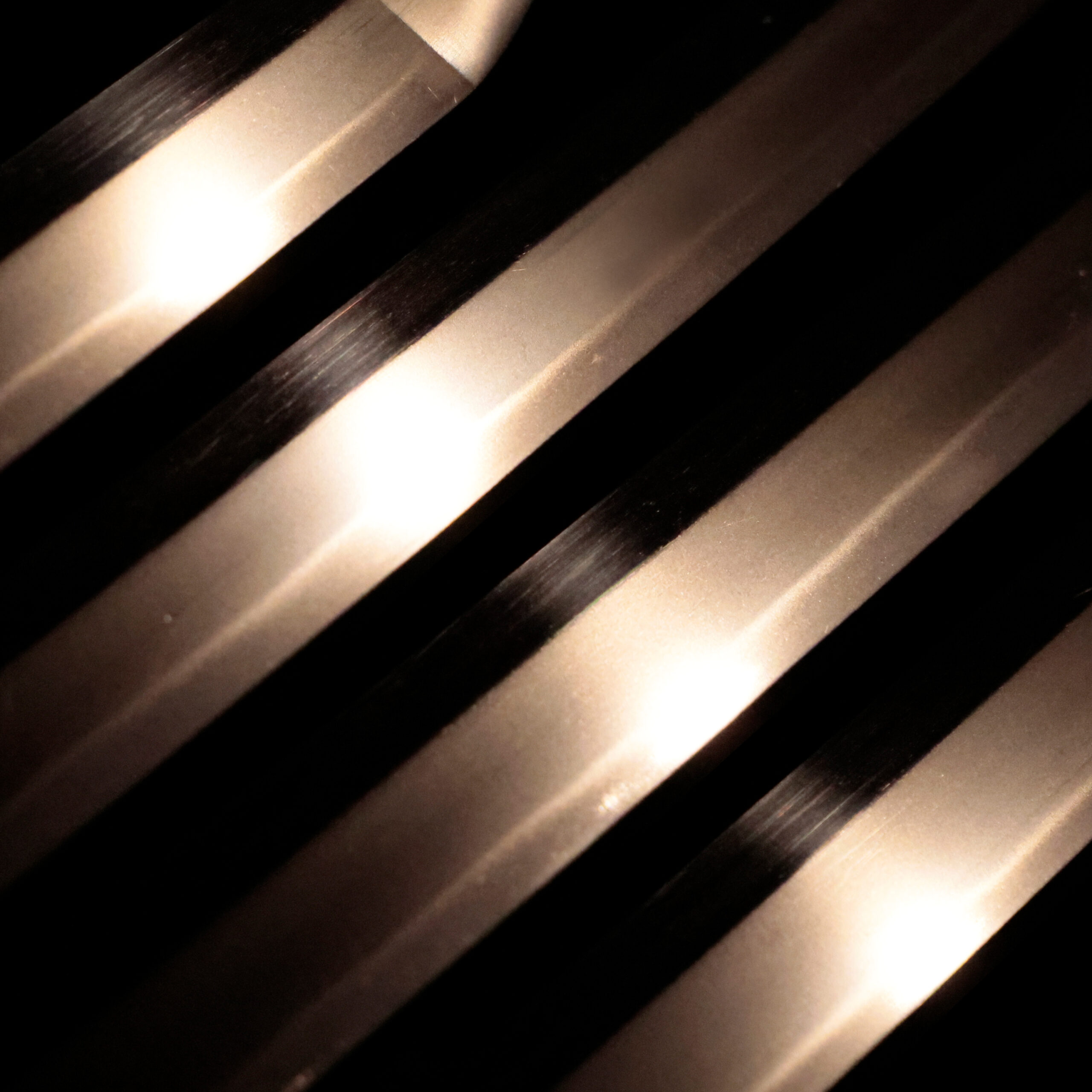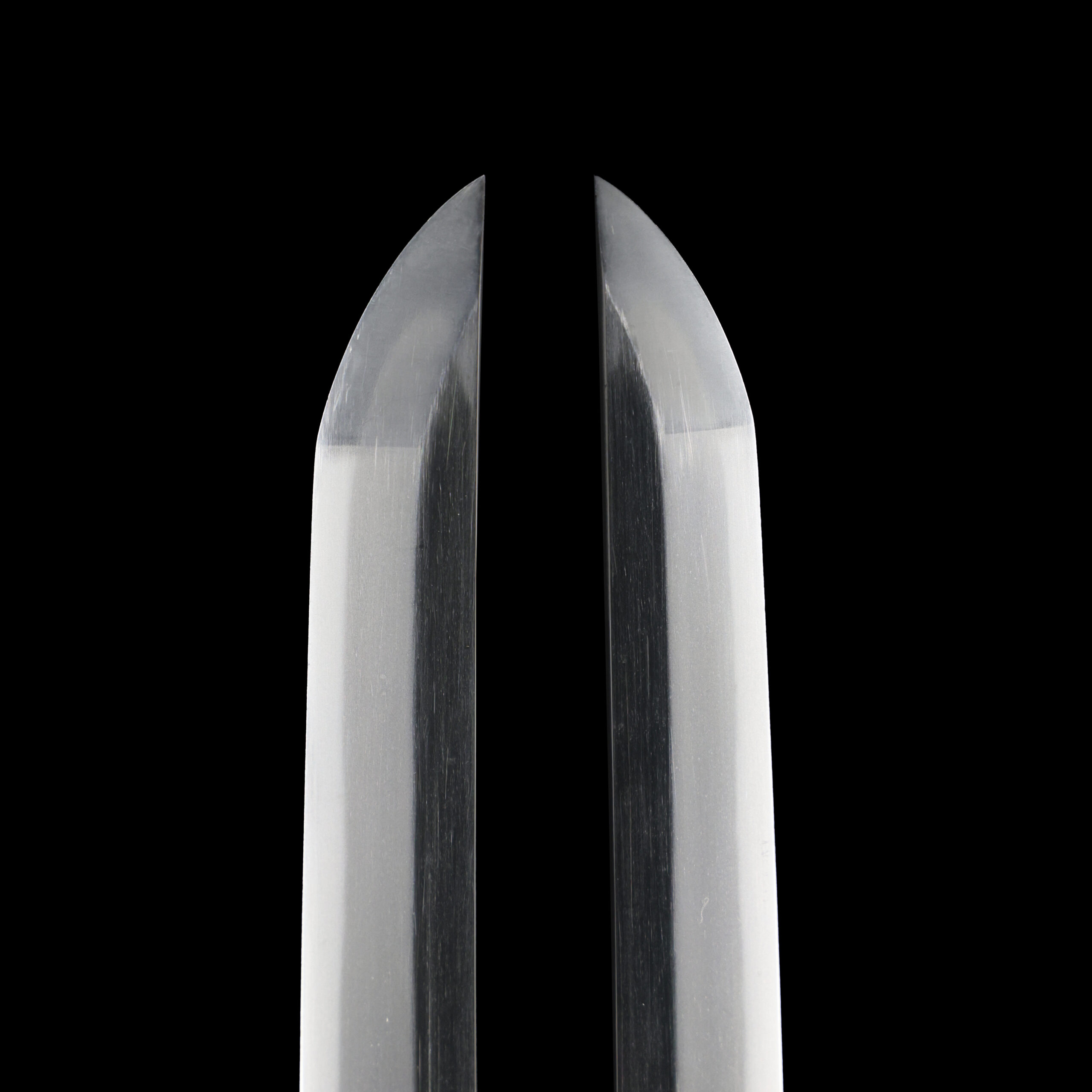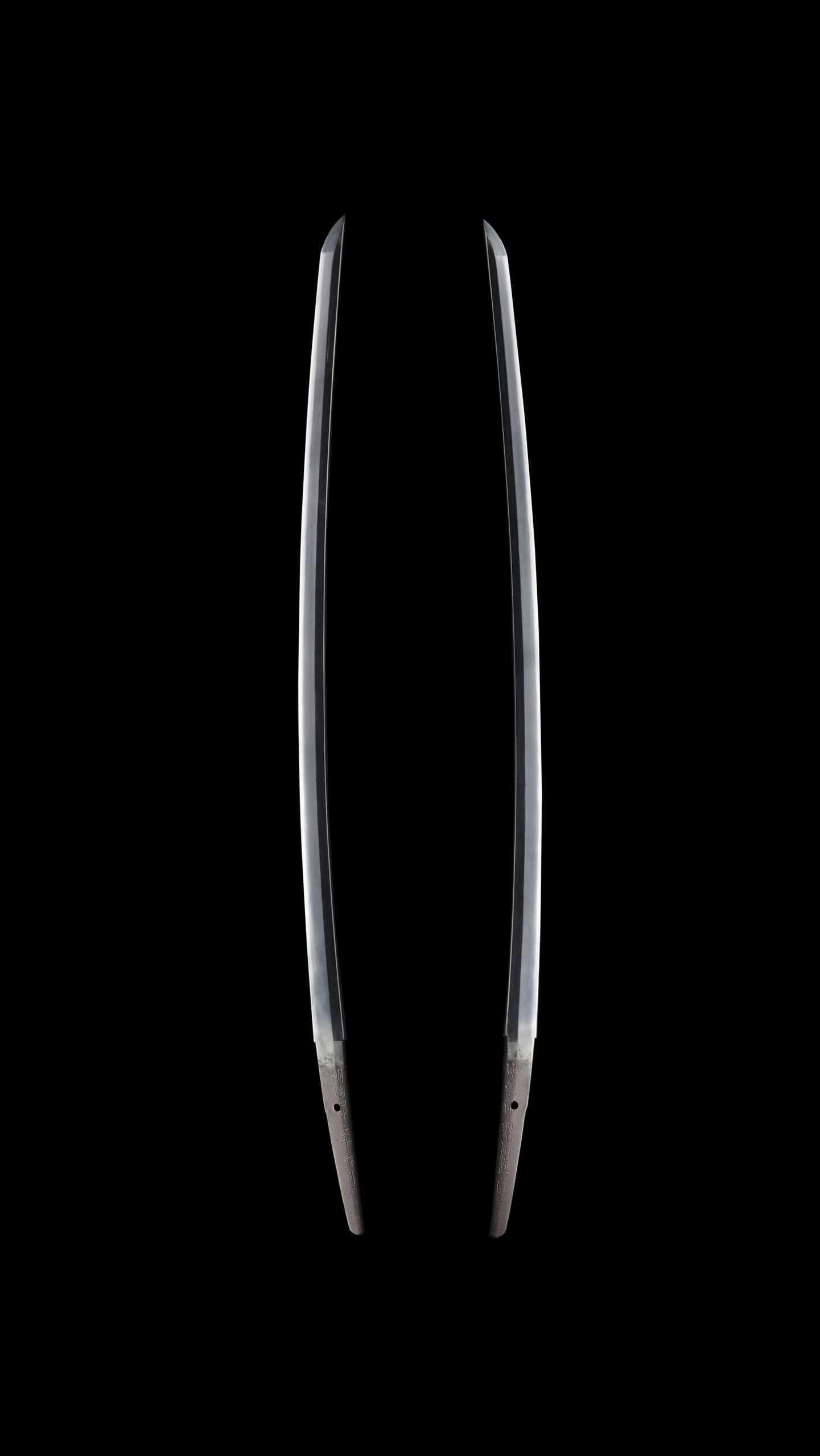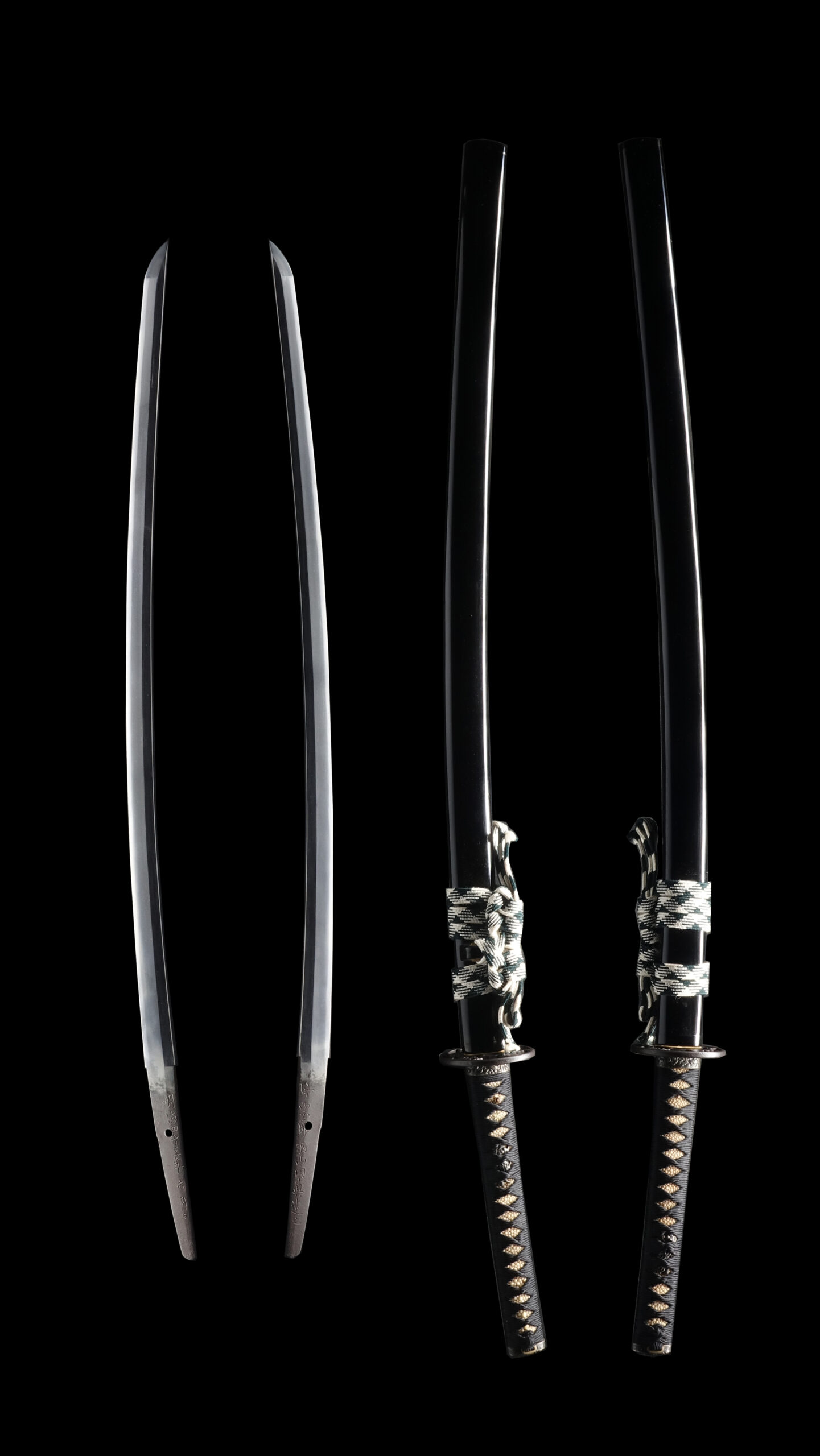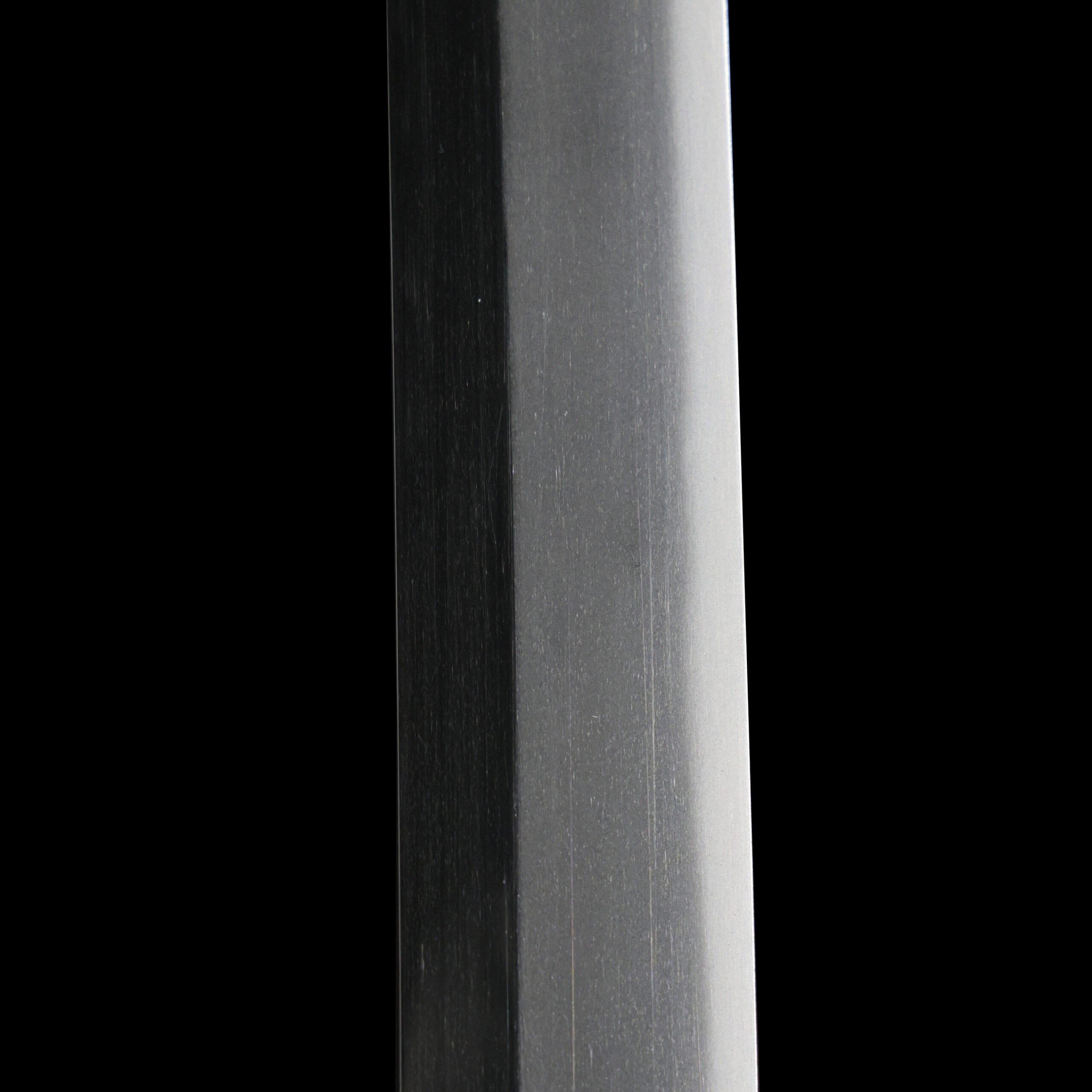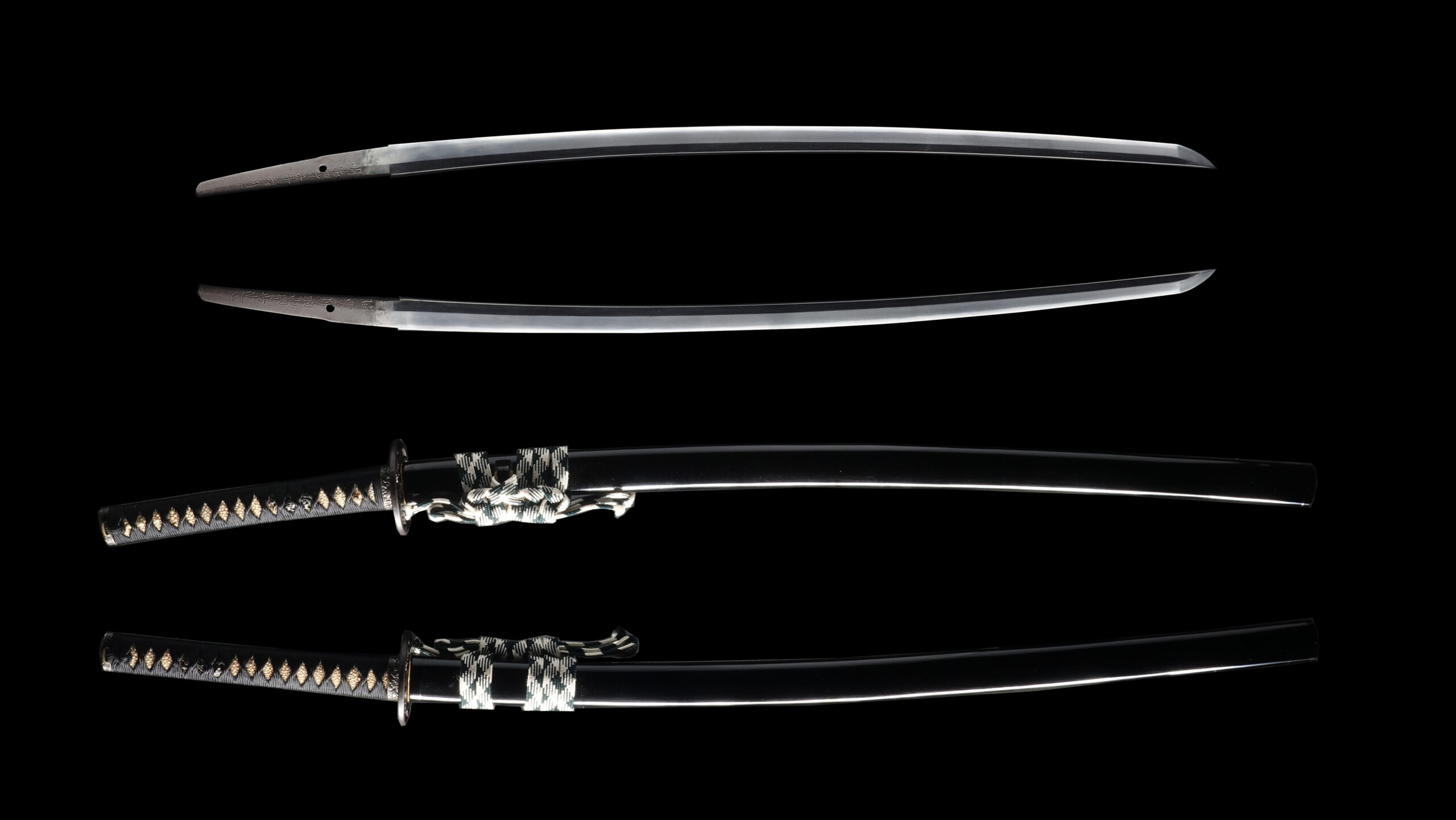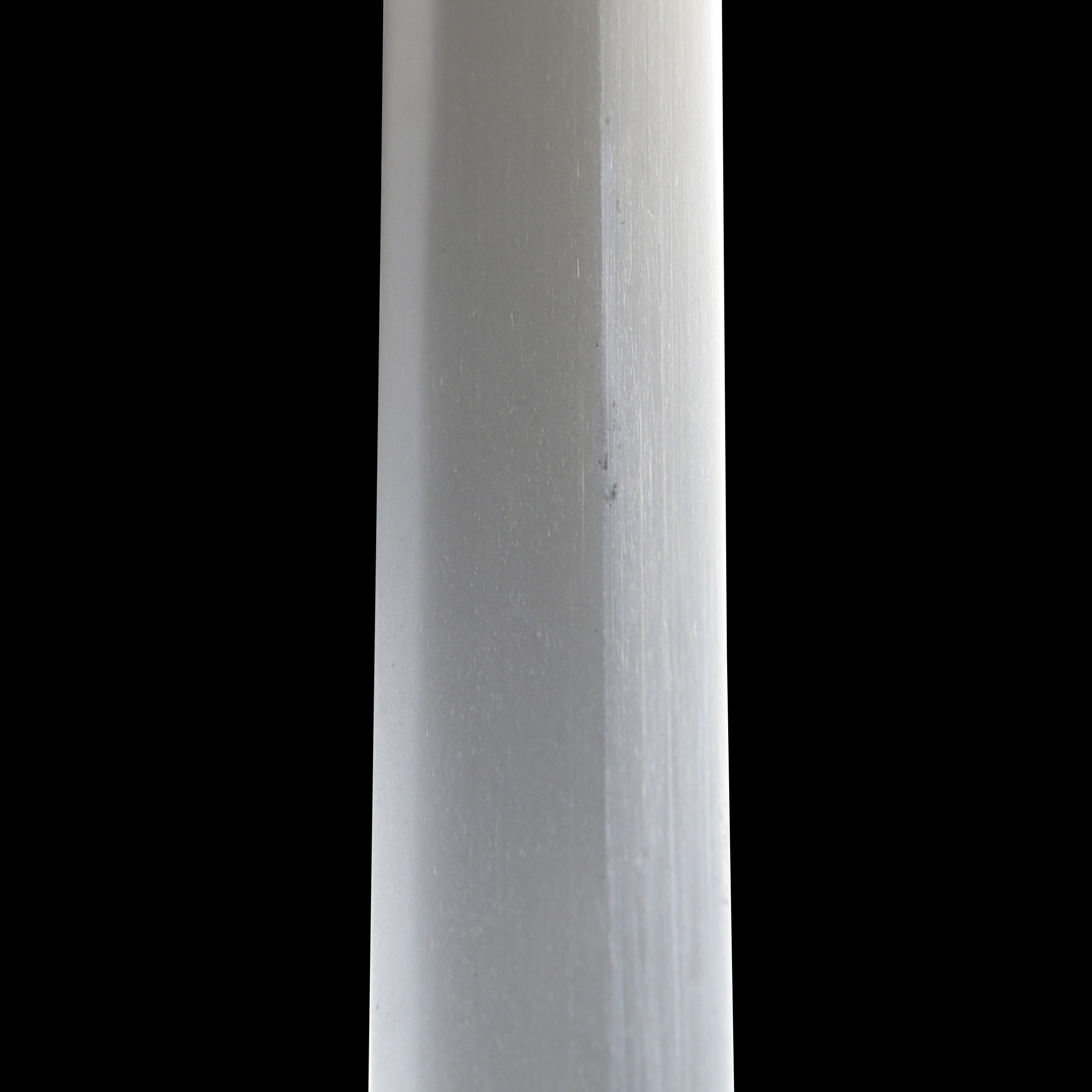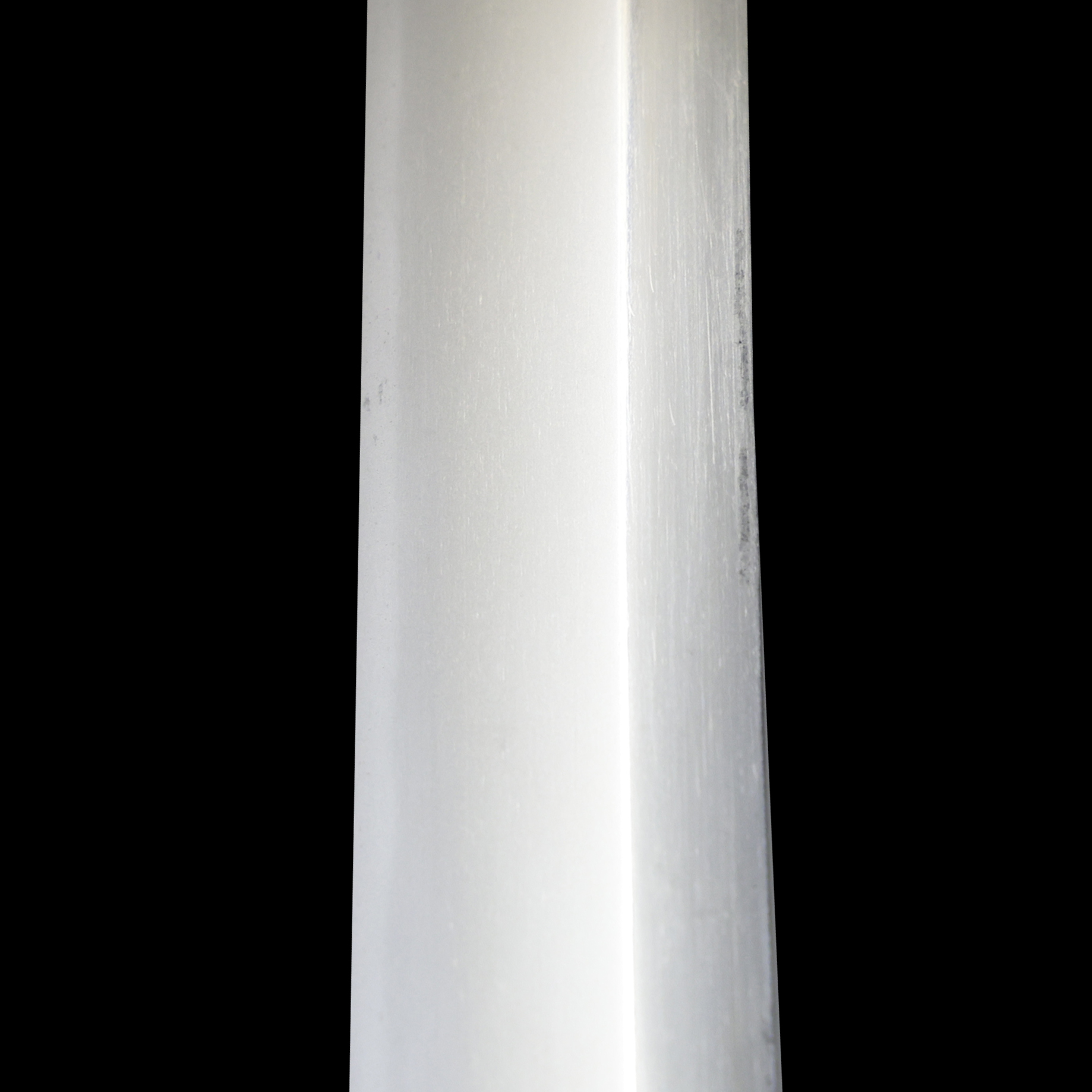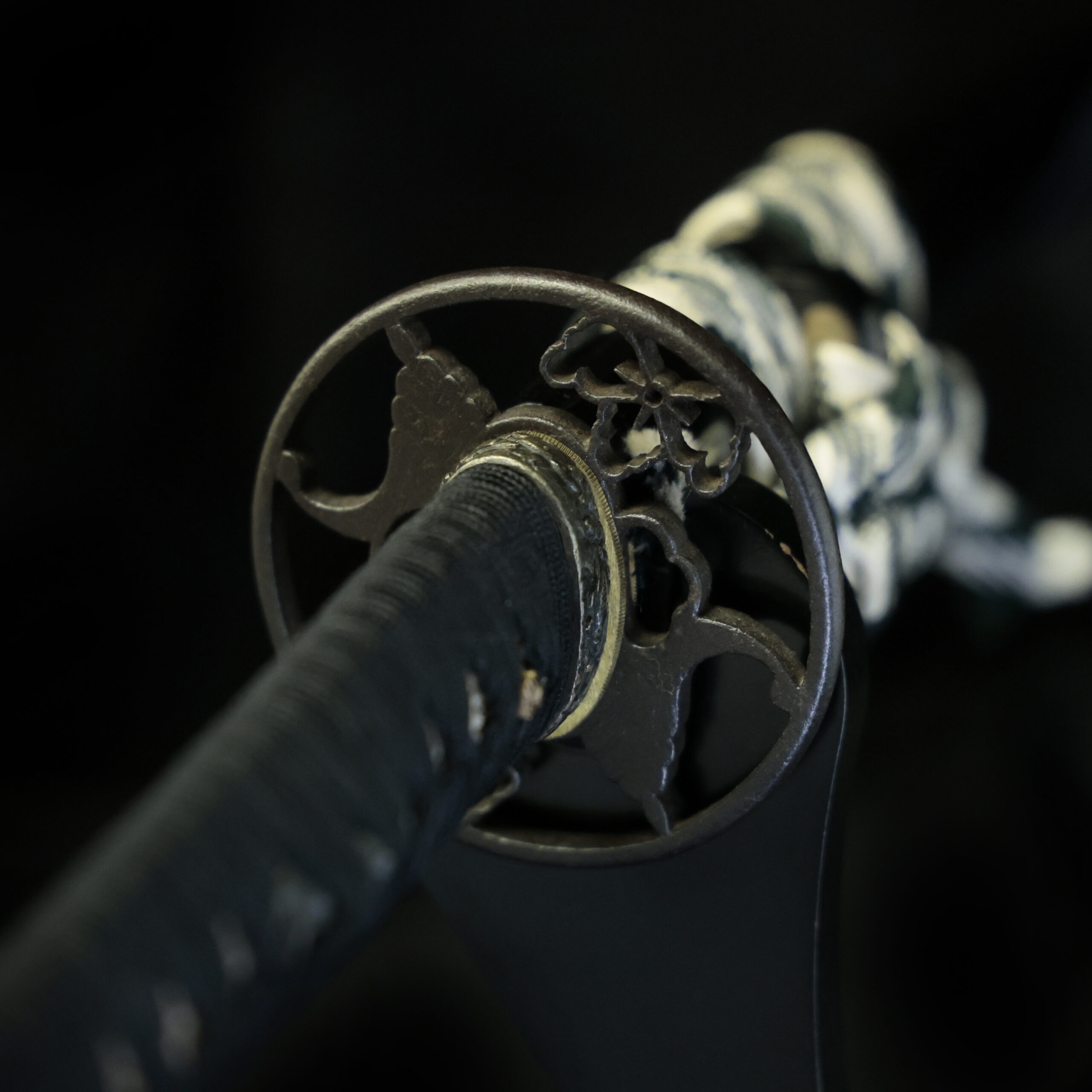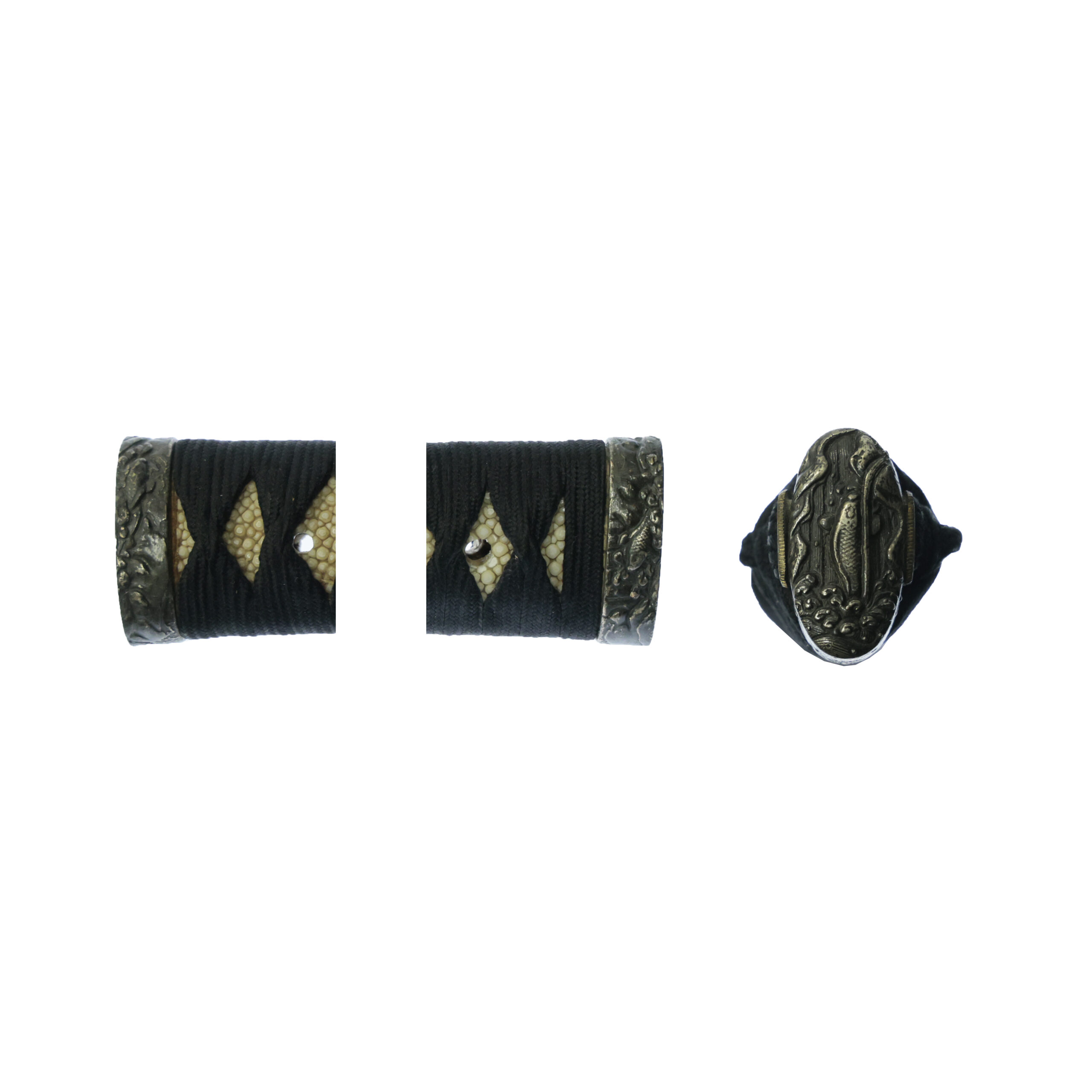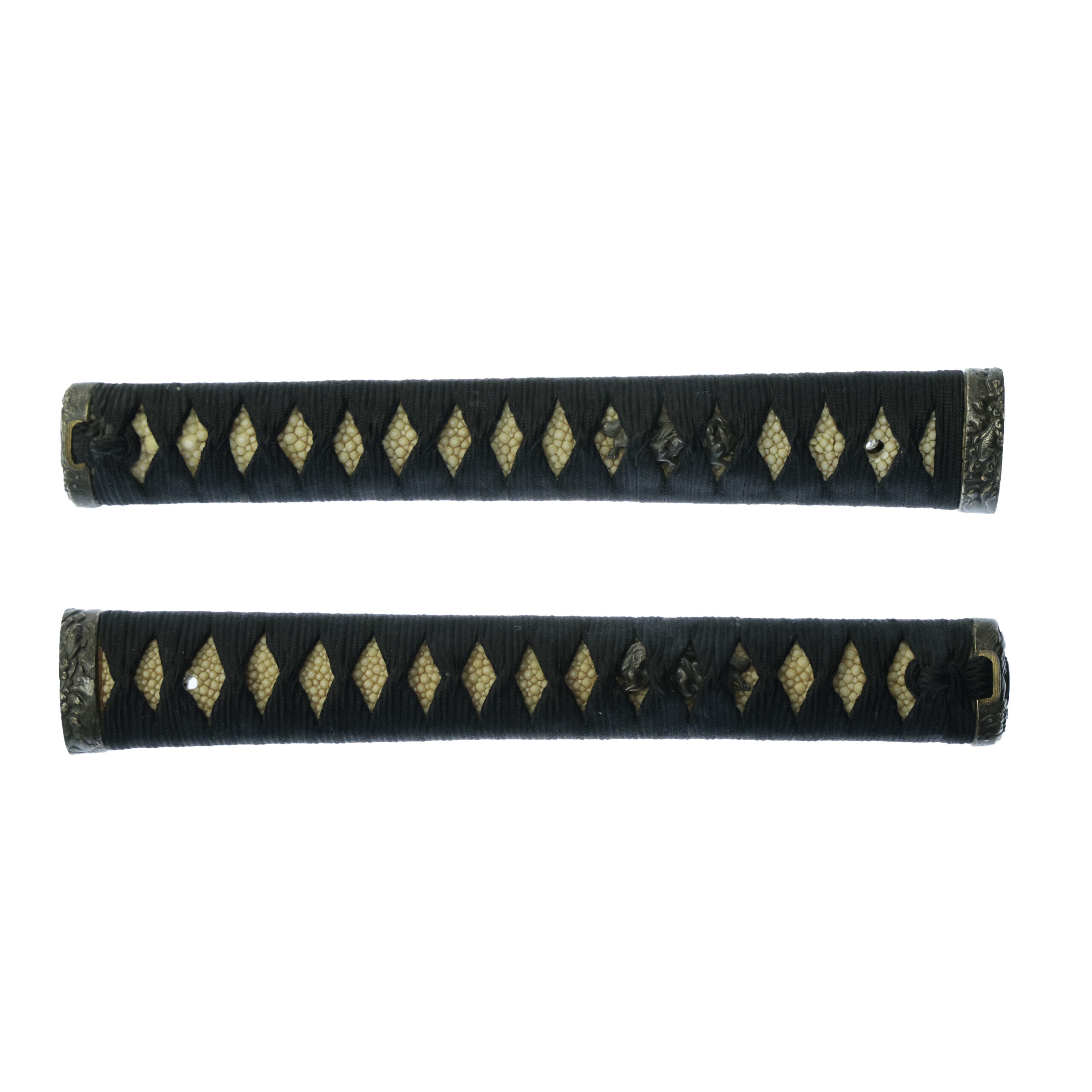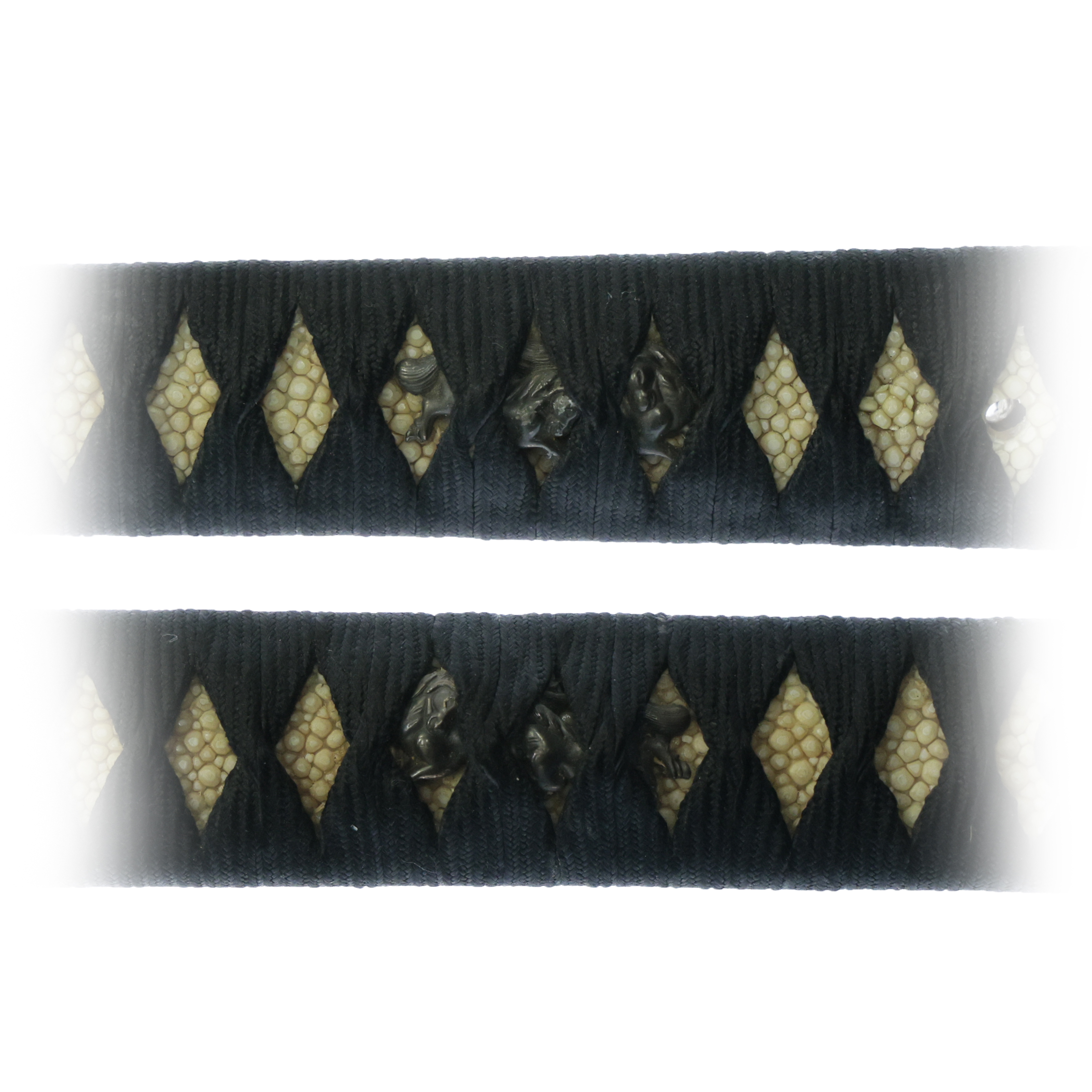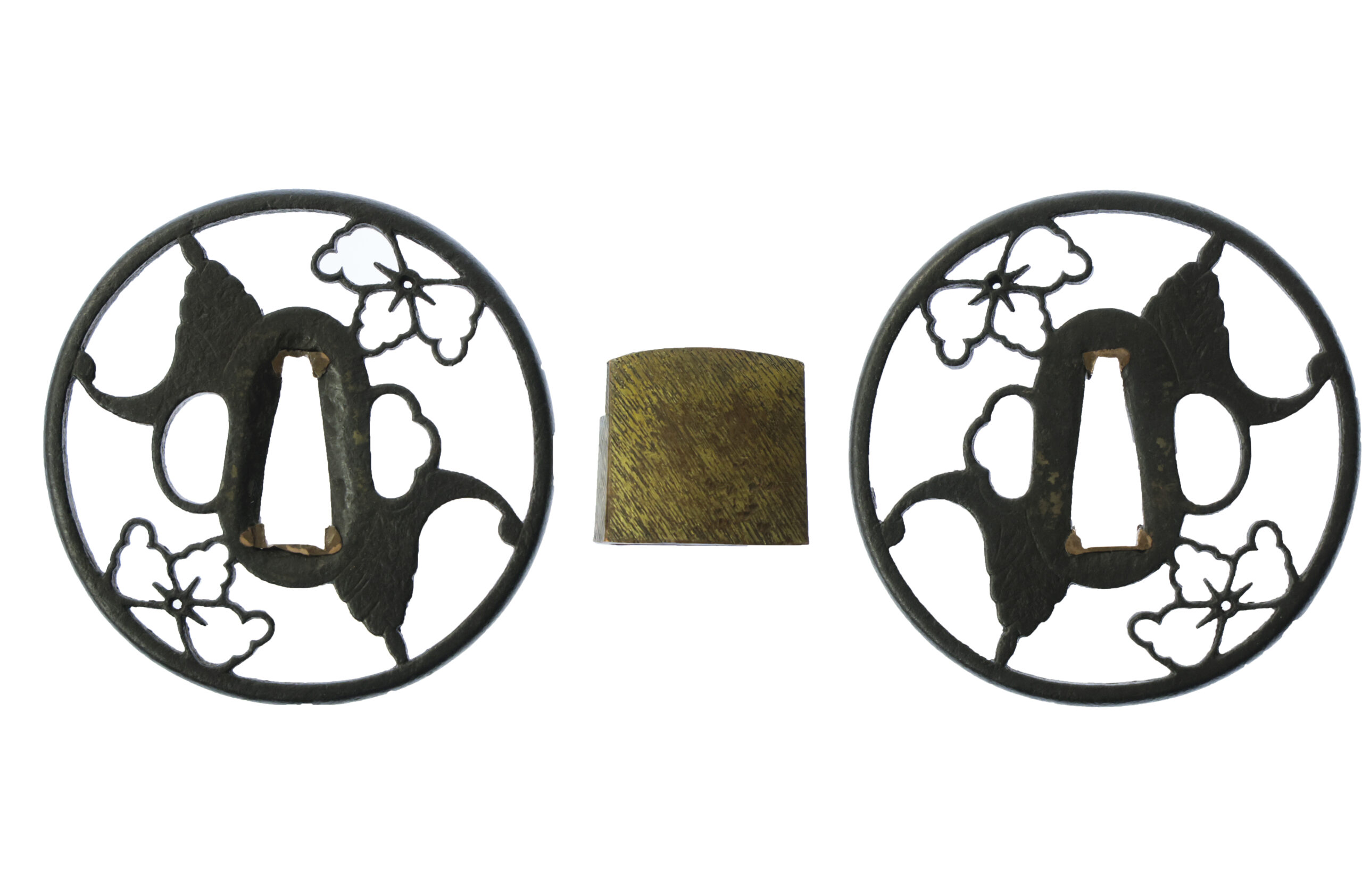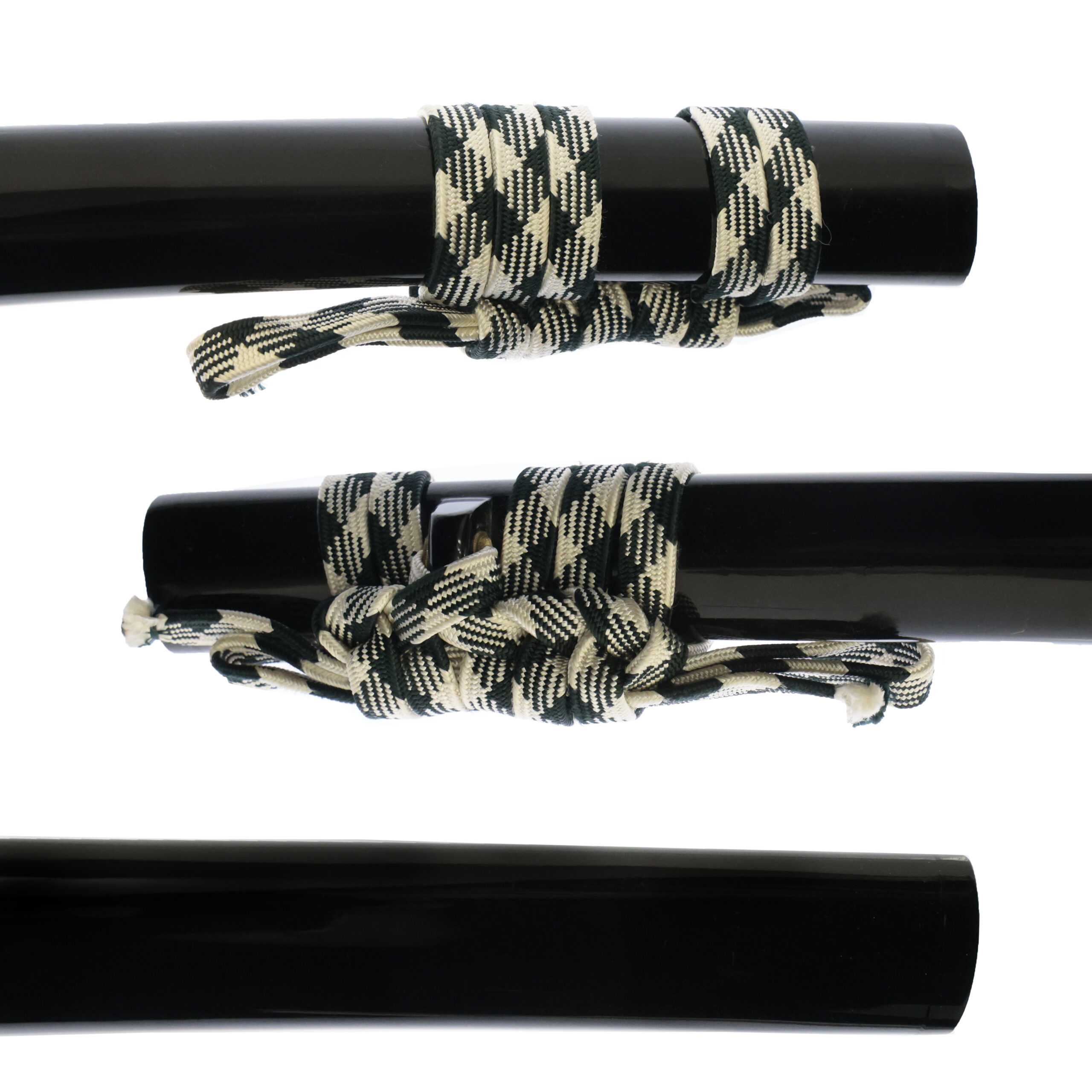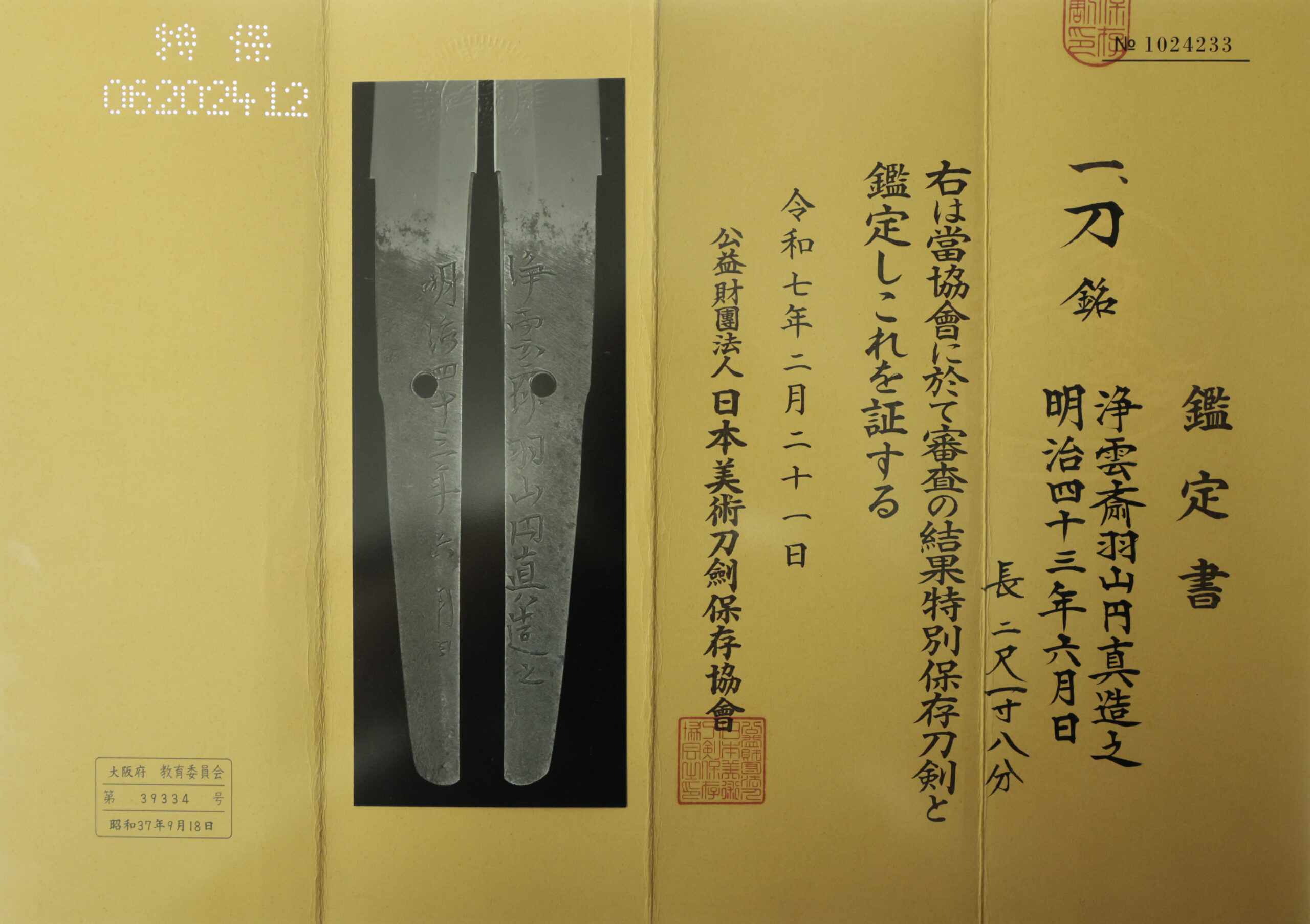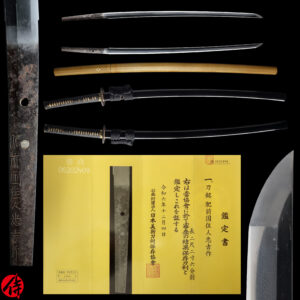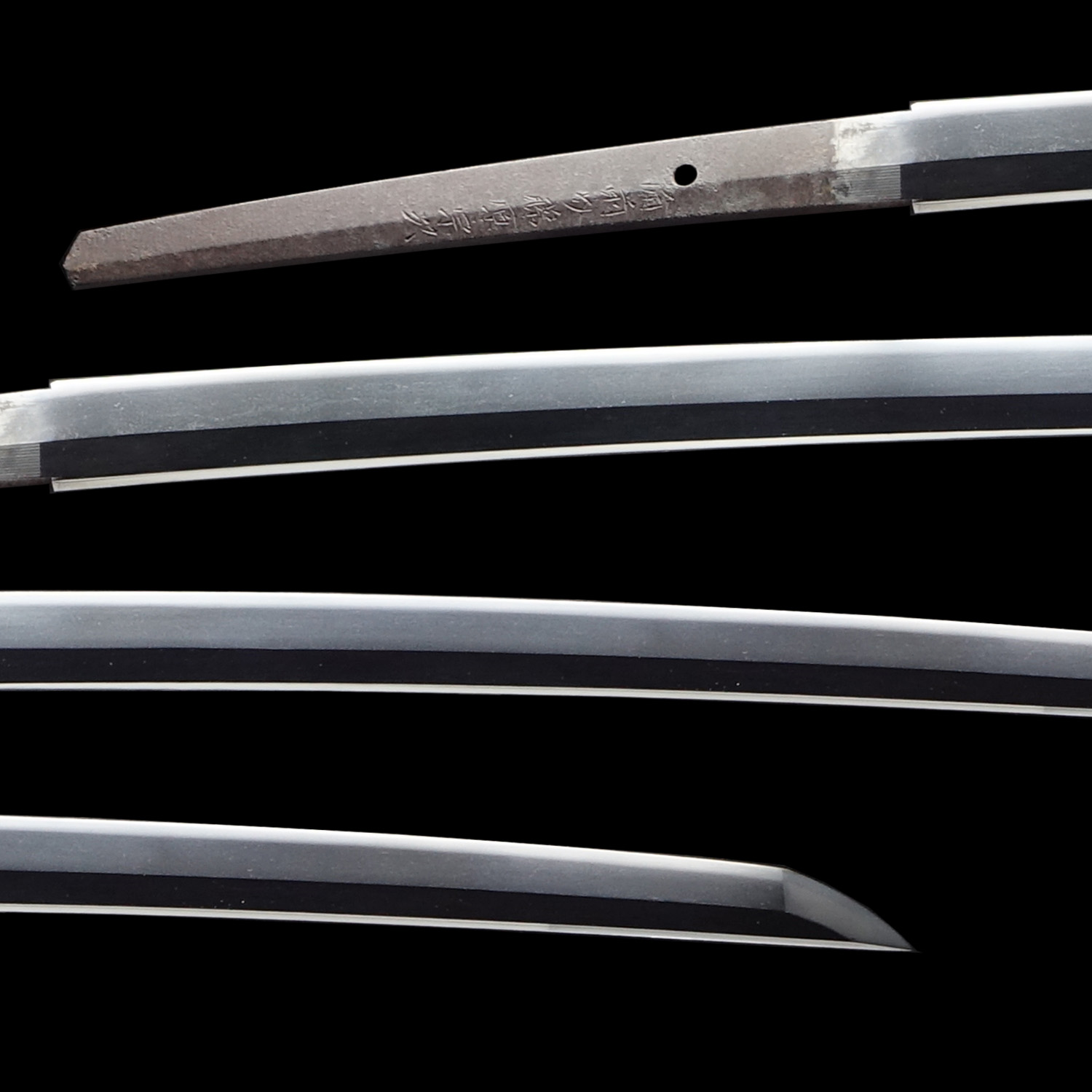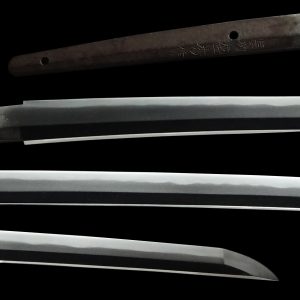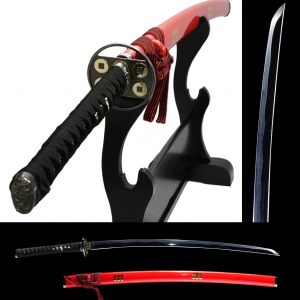Antique Japanese Sword Katana Signed by Jyounsai Hayama Enshin with Tokubetsu Hozon Certificate
【Description】
This blade was signed by Jyounsai Hayama Enshin (浄雲斎羽山円真) in June, the 43rd year of the Meiji era (1910). Enshin was born in the second year of the Koka era (1845: The Late Edo period) in Edo city. His birth name was Suzuki Masahiro.
He learned sword-forging techniques from Suzuki Masao, an apprentice of Kiyomaro, one of the most famous swordsmiths at the end of the Edo period. Enshin lived in Edo city while he was a Samurai from Toyohashi city (Aichi prefecture).
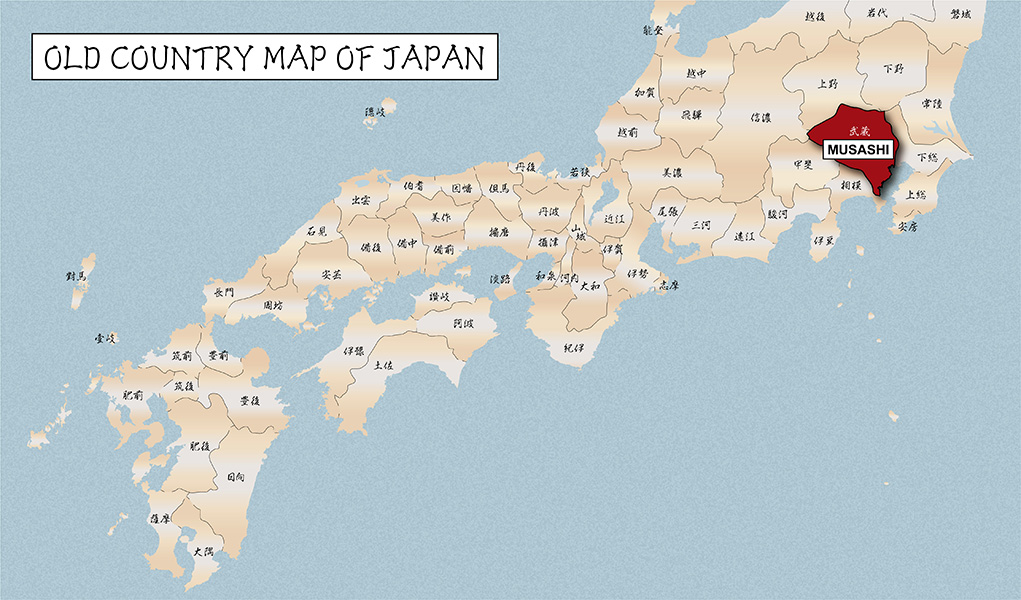

Enshin was one of the most renowned swordsmiths during the Meiji-Taisho era, and he preferred to use Swiss carbon steel, while other swordsmiths used Tamahagane, traditional Japanese carbon steel. He was known as a master of using western carbon steel. He was excellent at making *Utsushi of famous Japanese swords such as Awataguchi Kuniyoshi (粟田口国吉).
The shape of Nakago in his work is very peculiar, and it is called Kiji Momo Gata Nakago (雉子股型茎). You can see the sudden bump on the upper part of the Nakago. It was named after the fact that its shape resembles a pheasant’s thigh. In Japanese, pheasant is pronounced as Kiji, and thigh is Momo. This Nakago shape was often found in the Tachi blades forged in the Heian and Kamakura period. Kiji Momo Gata Nakago symbolizes famous swords in ancient times.
When Enshin started his career, it was the end of the Edo period, when the military government of Samurai(Tokugawa Shogunate)controlled Japan, and feudal society was the norm. There was plenty of demand for weapons from Samurais back then. However, in 1868, there was a civil war between Tokugawa’s shogunate government and the new Meiji imperial government. After this battle, the Tokugawa shogunate was ousted, and the imperial government gained control. The whole feudal system was dismantled, and the new government took Samurai’s social status. The demand for Japanese swords decreased dramatically from the beginning of the Meiji era. Many swordsmiths lost their jobs or changed their career. However, Enshin kept forging swords to keep the tradition alive. He died at 75 on Feb 14th in the 9th year of the Taisho era.
*Utsushi is a Japanese sword whose specification was based on historically famous swords, but it was made by a different swordsmith to pay respect to a renowned swordsmith.
It is appraised as a Tokubetsu Hozon Token (特別保存刀剣) issued by NBTHK (Nihon Bijutsu Touken Hozon Kyokai:日本美術刀剣保存協会). This authentication paper was only given to authentic Japanese swords, especially well preserved and high quality with artistic value.
*Please keep in mind that there are a couple of Kitae Kizu as well as minor black rust on the blade. If you like to know the detailed condition, please feel free to contact us.
【Blade】
Cutting Edge Length(Nagasa):66.2 cm (26.06 inches)
Curvature(Sori):1.7 cm (0.66 inches)

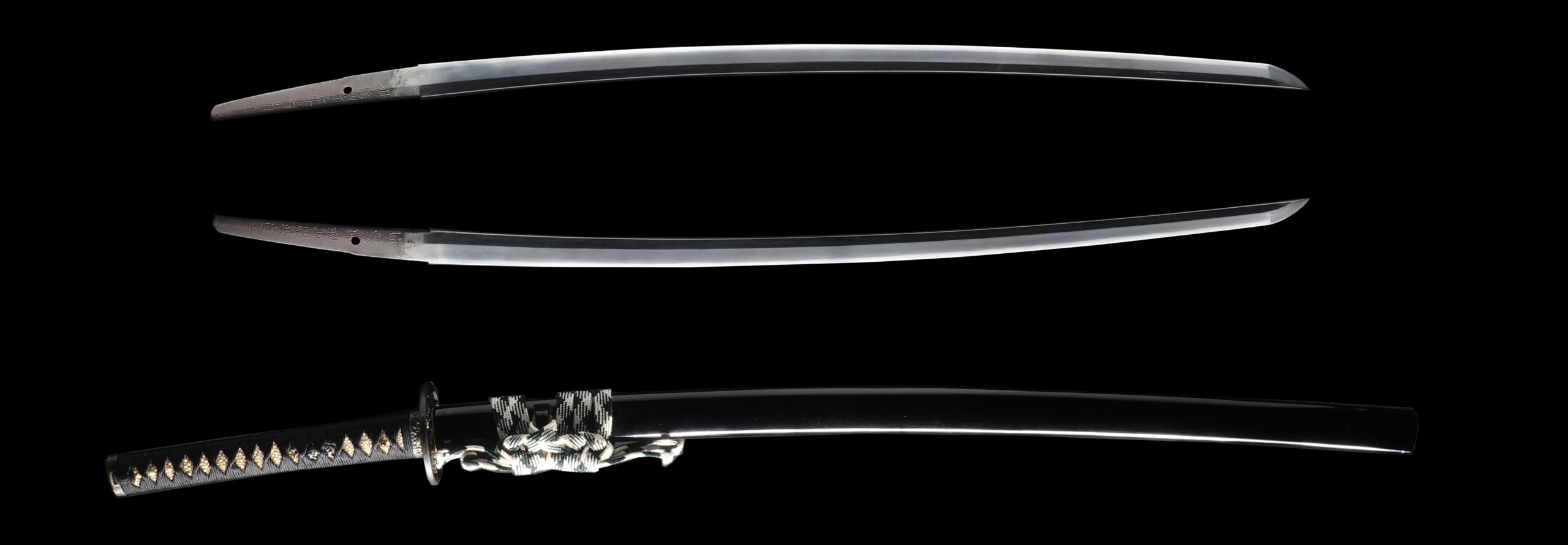
Hamon:
The crystalline structure which forms along the cutting edge of a blade as a result of the hardening process
Jimon(Jihada):
visible steel surface pattern created by folding and hammering during forging process
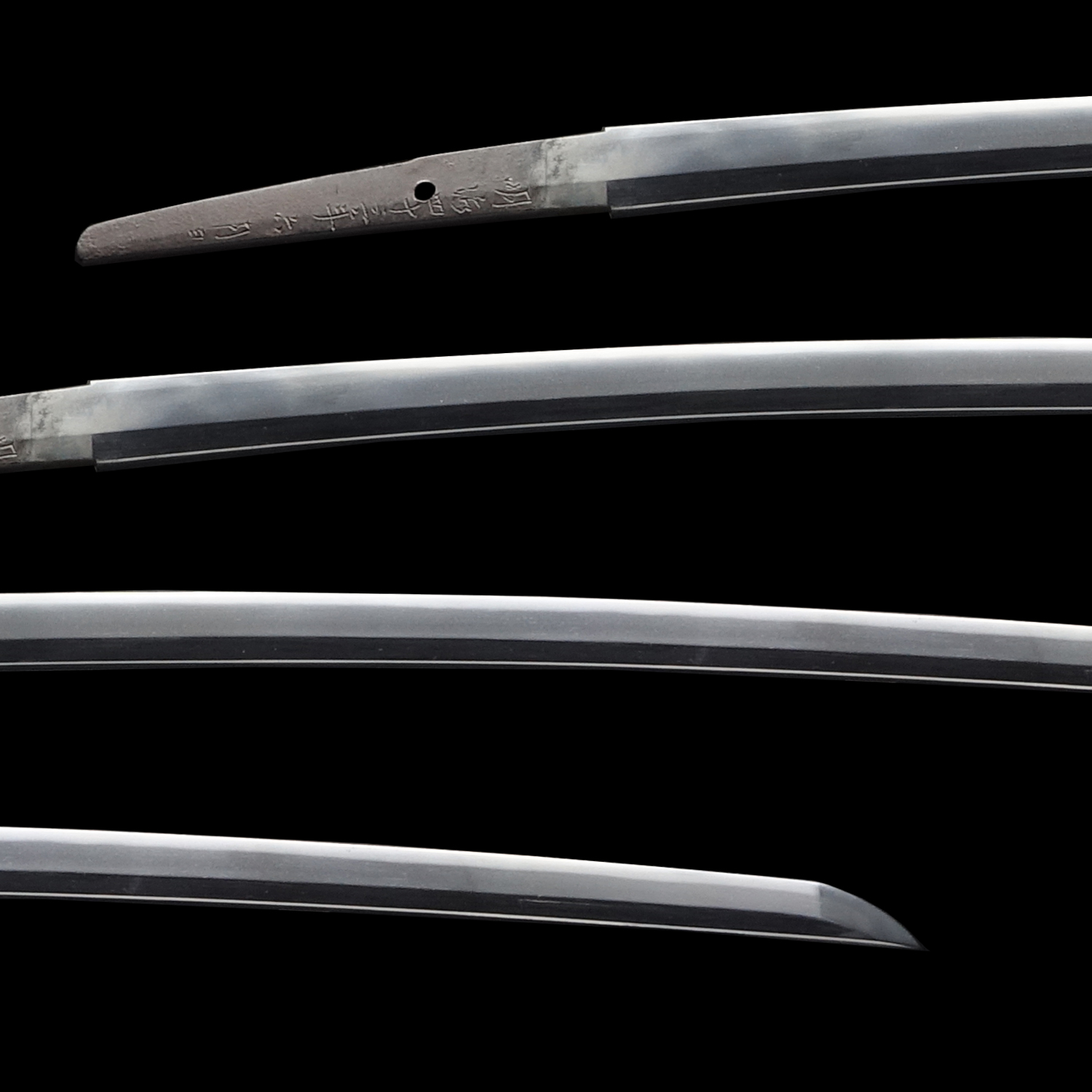


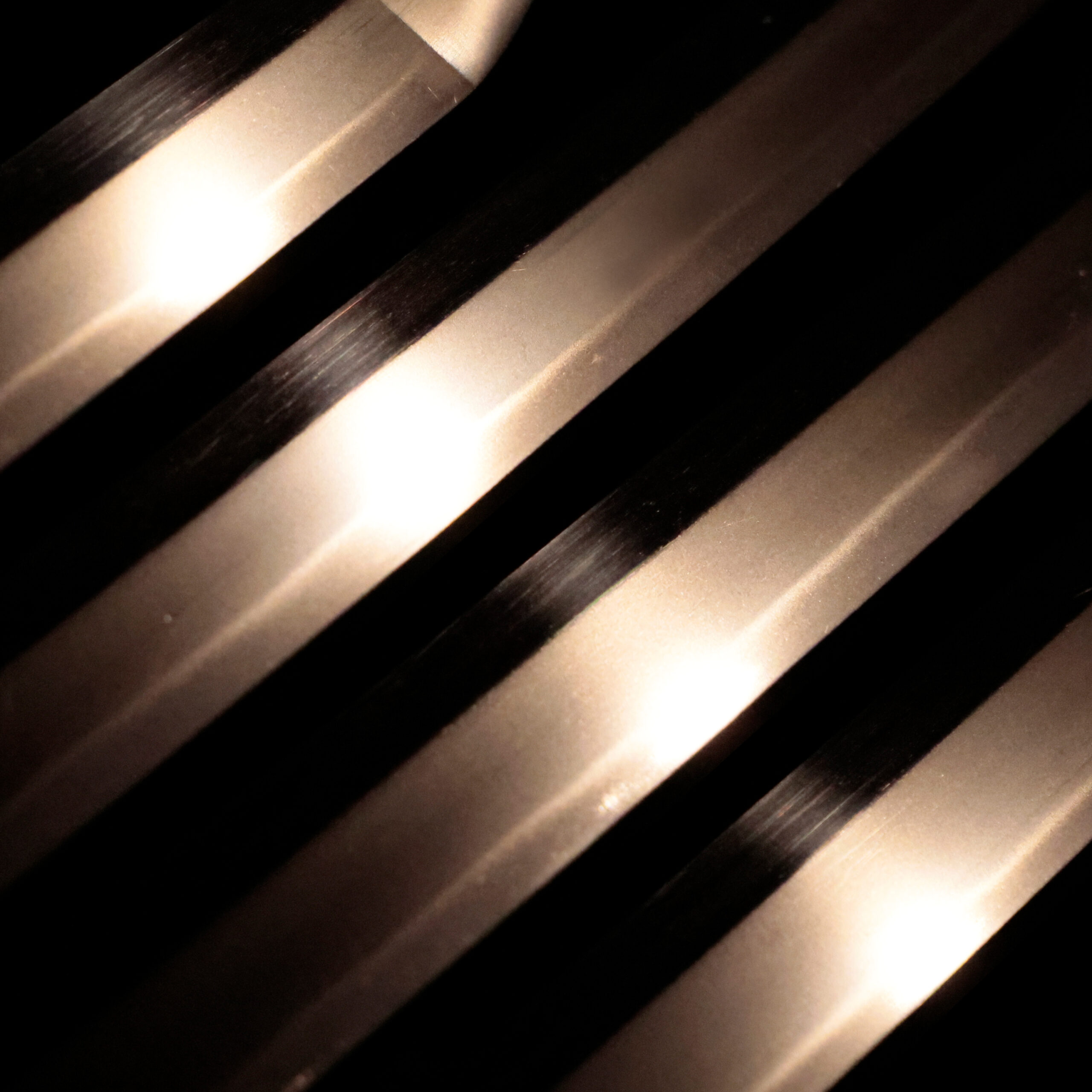
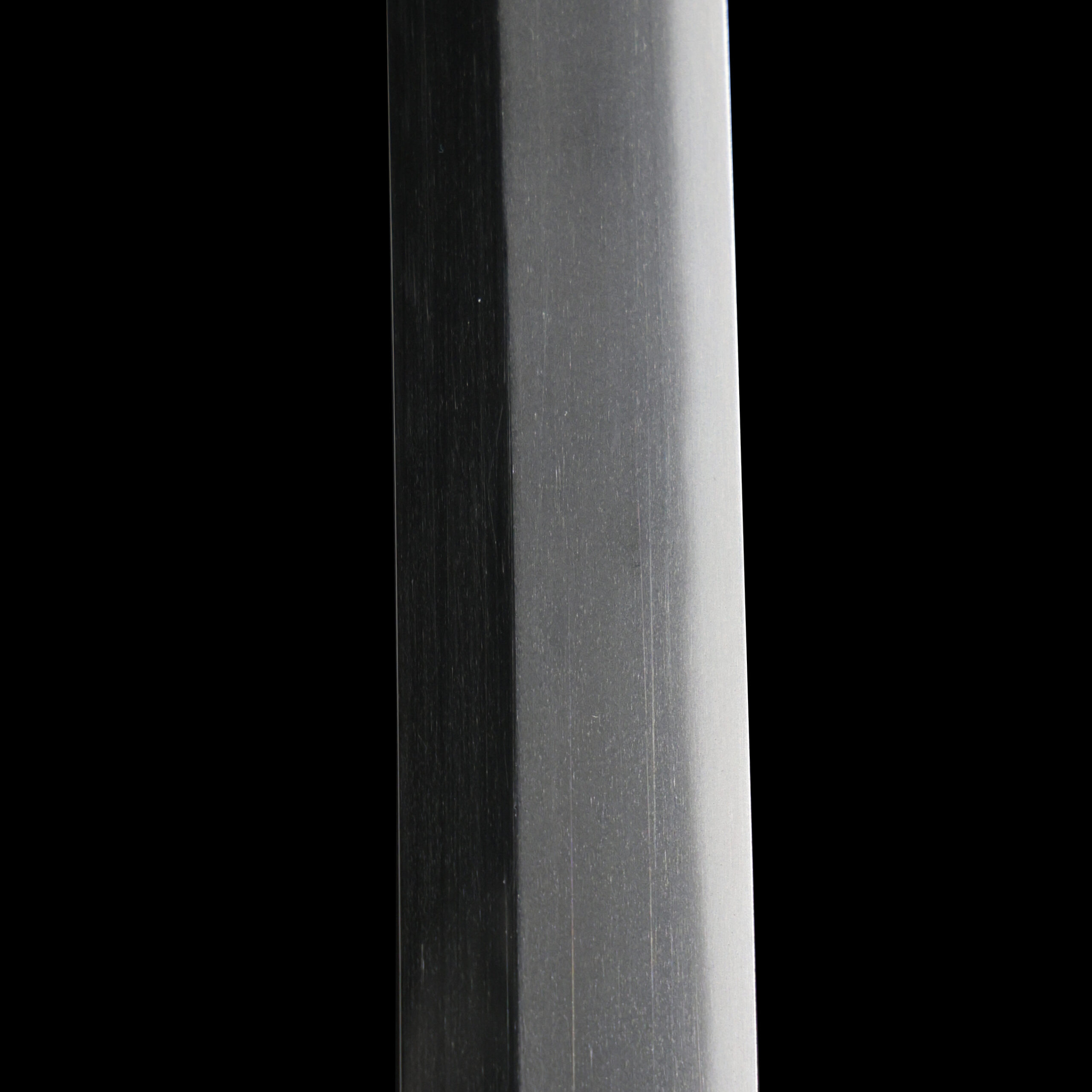
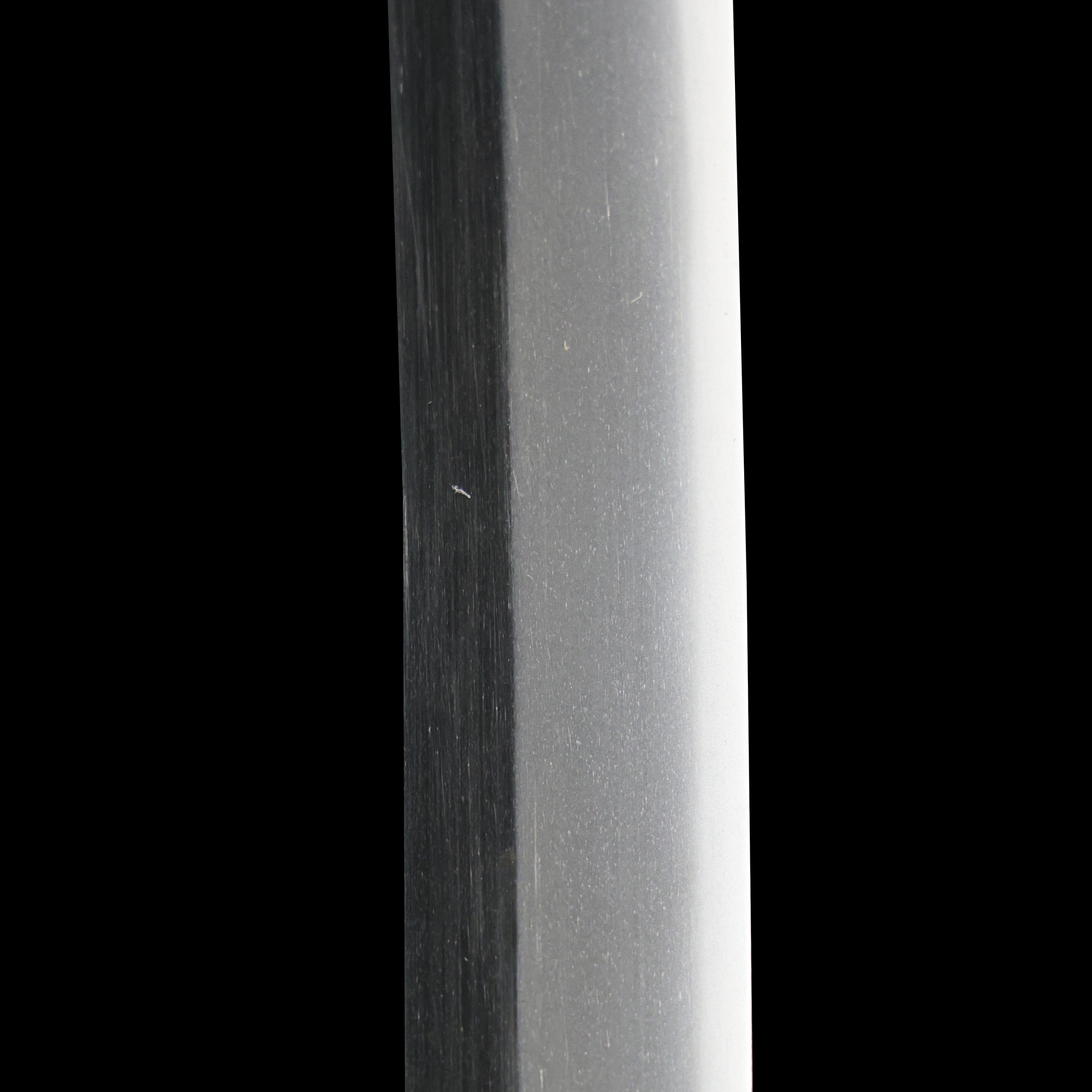
Kissaki:Kissaki is the tip of the Japanese sword.
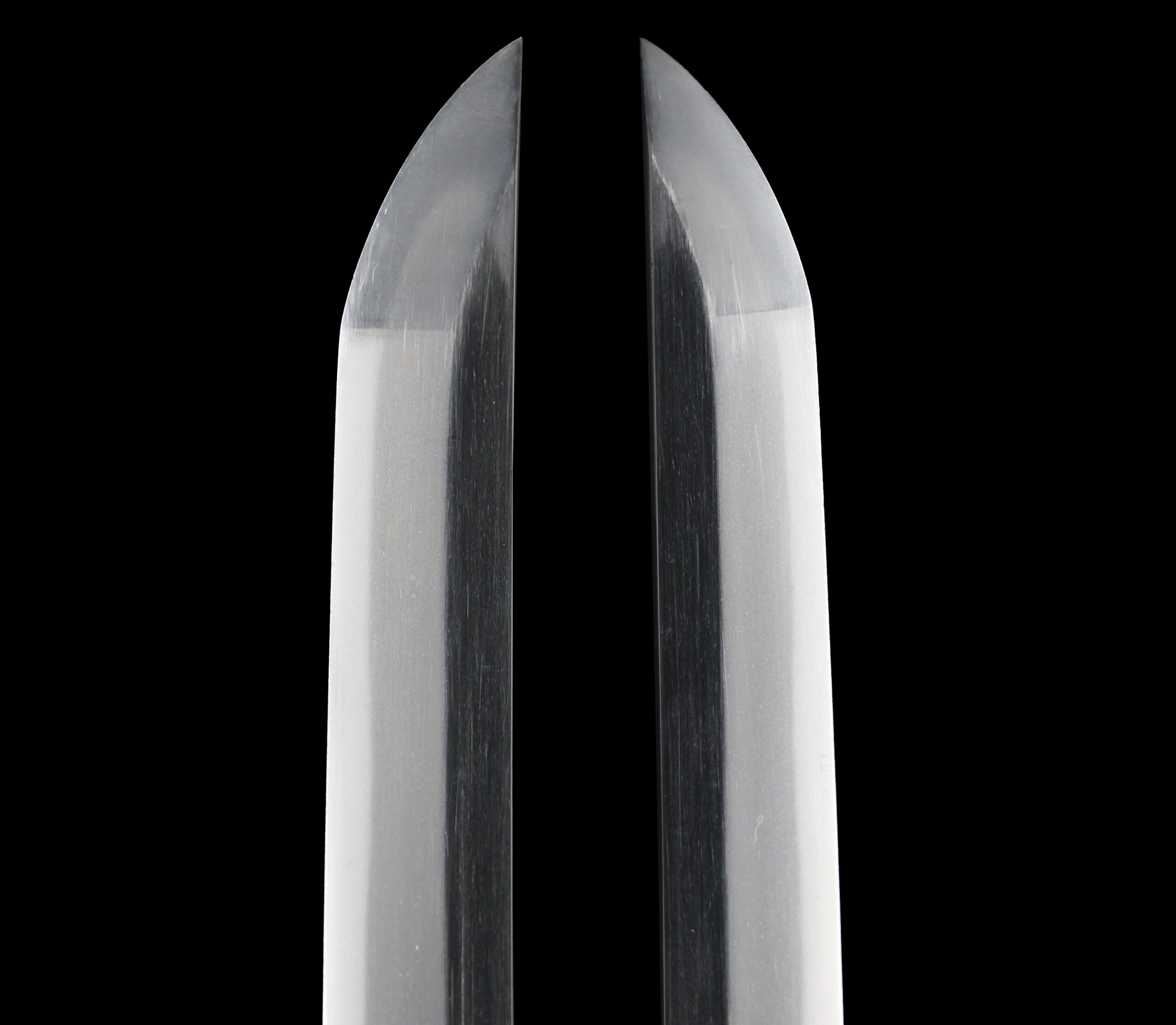
Nakago:Nakago is the tang of the Japanese sword.
Japanese swordsmiths left the black rust on the tang because it prevents red rust while the tang is in its handle. And the discoloration of the tang was created over time, and it is a great indicator for a Japanese sword specialist to estimate when the sword was forged.
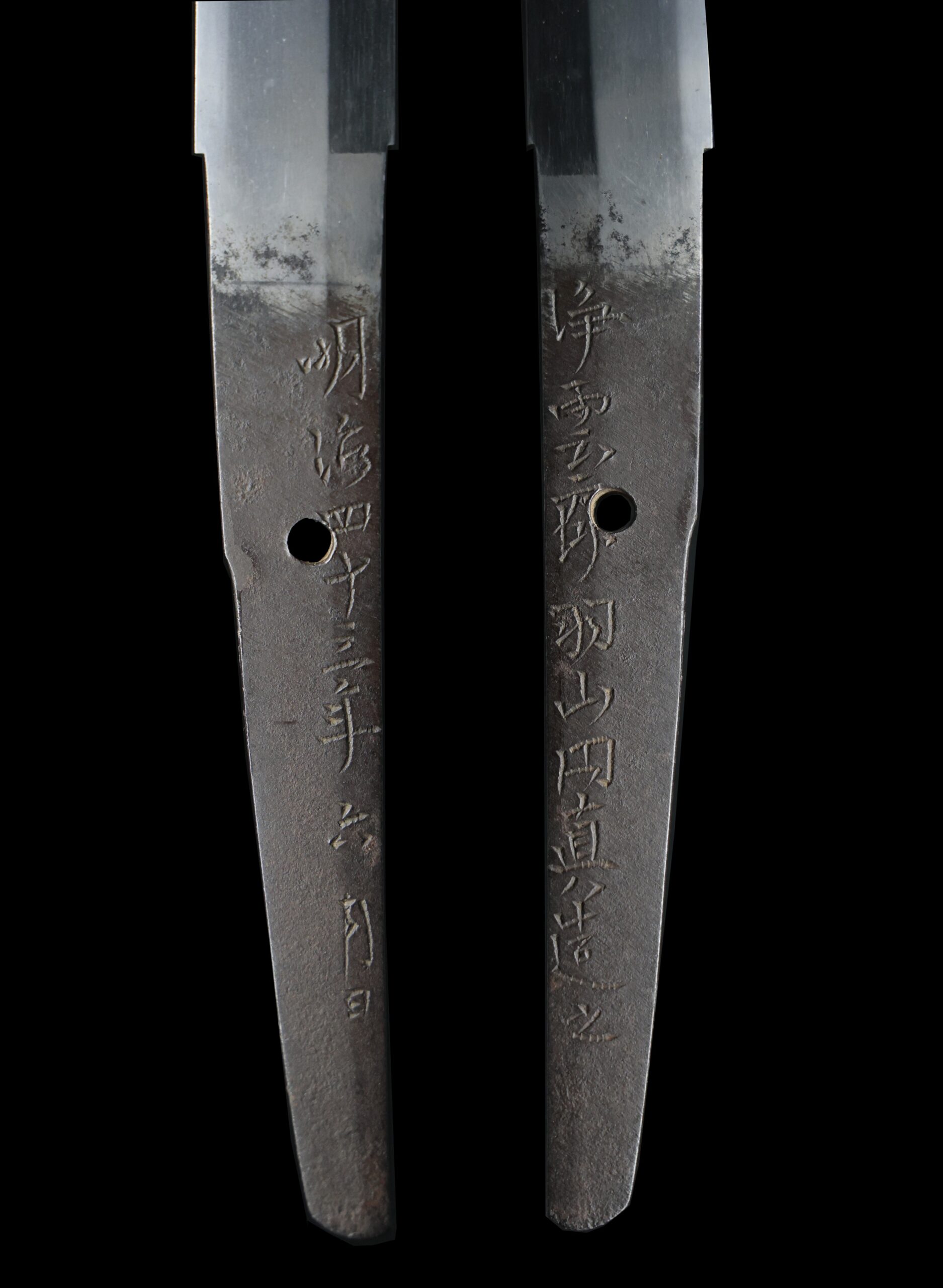
Koshirae:Koshirae is the mounting of the Japanese sword. There are several parts that consist of Koshirae such as Saya (Scabbard), Tsuka (Handle), Tsuba (Handguard).

Fuchi-Kashira:A pair of matching sword fittings that cover the upper and bottom parts of its sword hilt.
It seems the fish depicted on this Fuchi Kashira might be a Koi (鯉, domestic carp). According to an ancient foreign story, many fishes tried to climb the waterfall called the Ryumon (竜門, dragon gate) in the rapid stream of the Yellow River. As a result, only Koi could have climbed up and become a dragon and run through the sky. This is the reason why “Koi-no Taki Nobori” (鯉の滝昇り, domestic carp climbing waterfall) became a symbol of success in life. The Ryumon legend is associated with this story. This fish has been treated as the symbol of success in business and good health. By living confidently and making efforts, people hoped for their children to grow up to become magnificent people. Samurai families then might have used this fish motif wishing their sons to be promoted to high-ranked Samurai. The custom of decorating Koi-Nobori (鯉のぼり, domestic carp streamers) on Tango no Sekku (端午の節句, the Boy’s Festival) is said to have started in the middle of the Edo period. It is one of the traditional customs that has been passed down to the present day.
Sea bream is a good-luck bringer, so it has often been used for celebrations. Also, this fish is a symbol of the Ebisu (恵比寿) God, who is a member of the Shichifukujin (七福神, the Seven Gods of Good Fortune). The Ebisu God usually has a fishing pole and a sea bream, so initially, he was the God of fishing. Ports will be done well by the comings and goings of ships. Safe voyages will bring profitable businesses; therefore, the Ebisu became famous as the God of trade. In addition, it is believed to be the God of good match or wealth in some areas. Although the Ebisu God himself is not depicted for this Menuki, it might suggest this God’s existence.
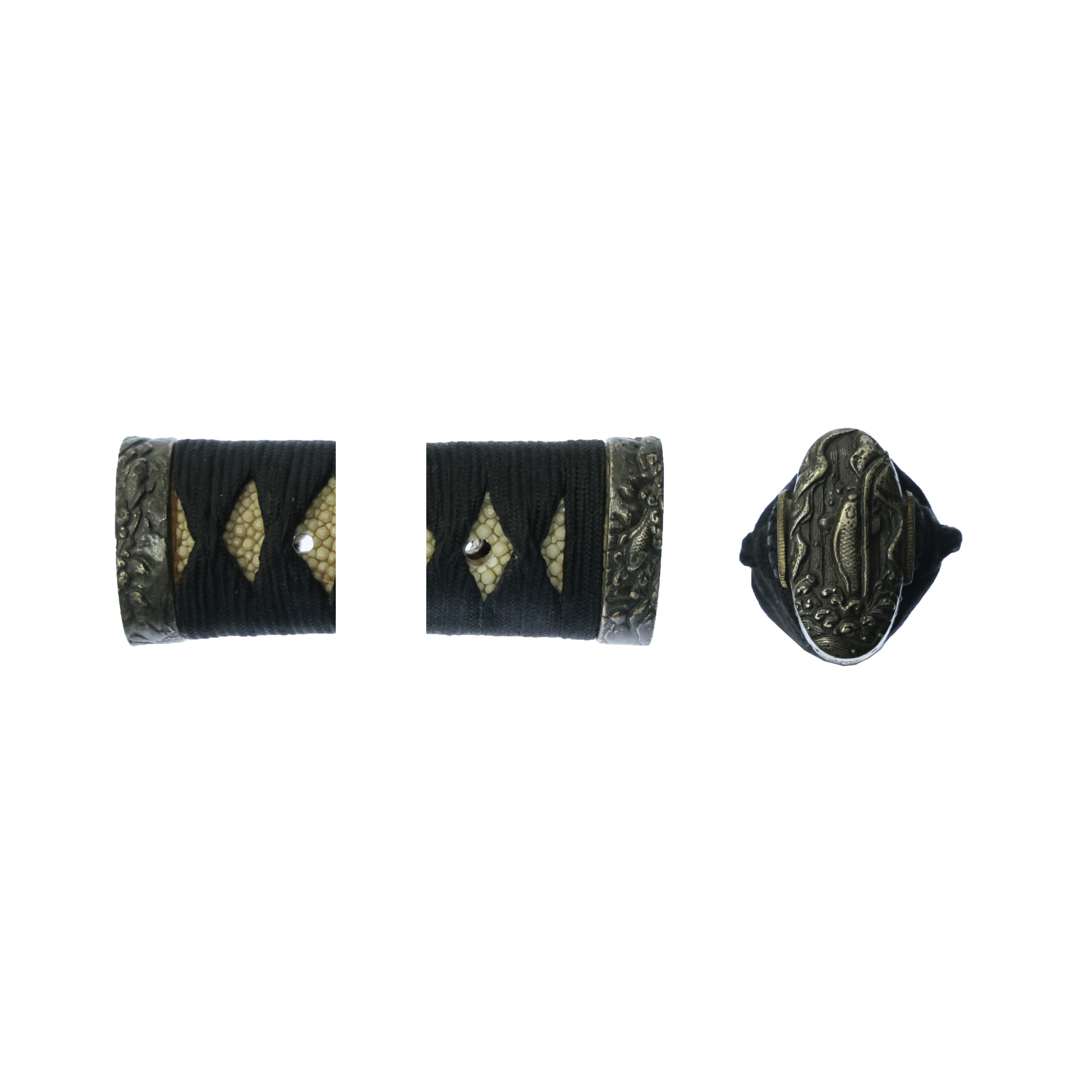
Tsuka and Menuki:Tsuka is the handle of the Japanese sword and Menuki is its decoration.
The motif of this Menuki is the horse (馬: Uma). Horses have been around human life for a long time, not only as our food but also for transportation or carriage of luggage. In Japan, horses were thought of as vehicles for gods to be dedicated to shrines in ancient times. It is said it is the origin of Ema (絵馬, picture tablet used as an offering at a shrine) today. Horses had been used as a tool for rituals and festivals. After the age that Samurai appeared, wearing large armor or performing archery riding a hose became martial arts. Equestrian tactics became the pillar of military action and security activities. According to a theory, that is why the Japanese sword began to have a curve to make it suitable for slashing (the Japanese sword was straight in the beginning).
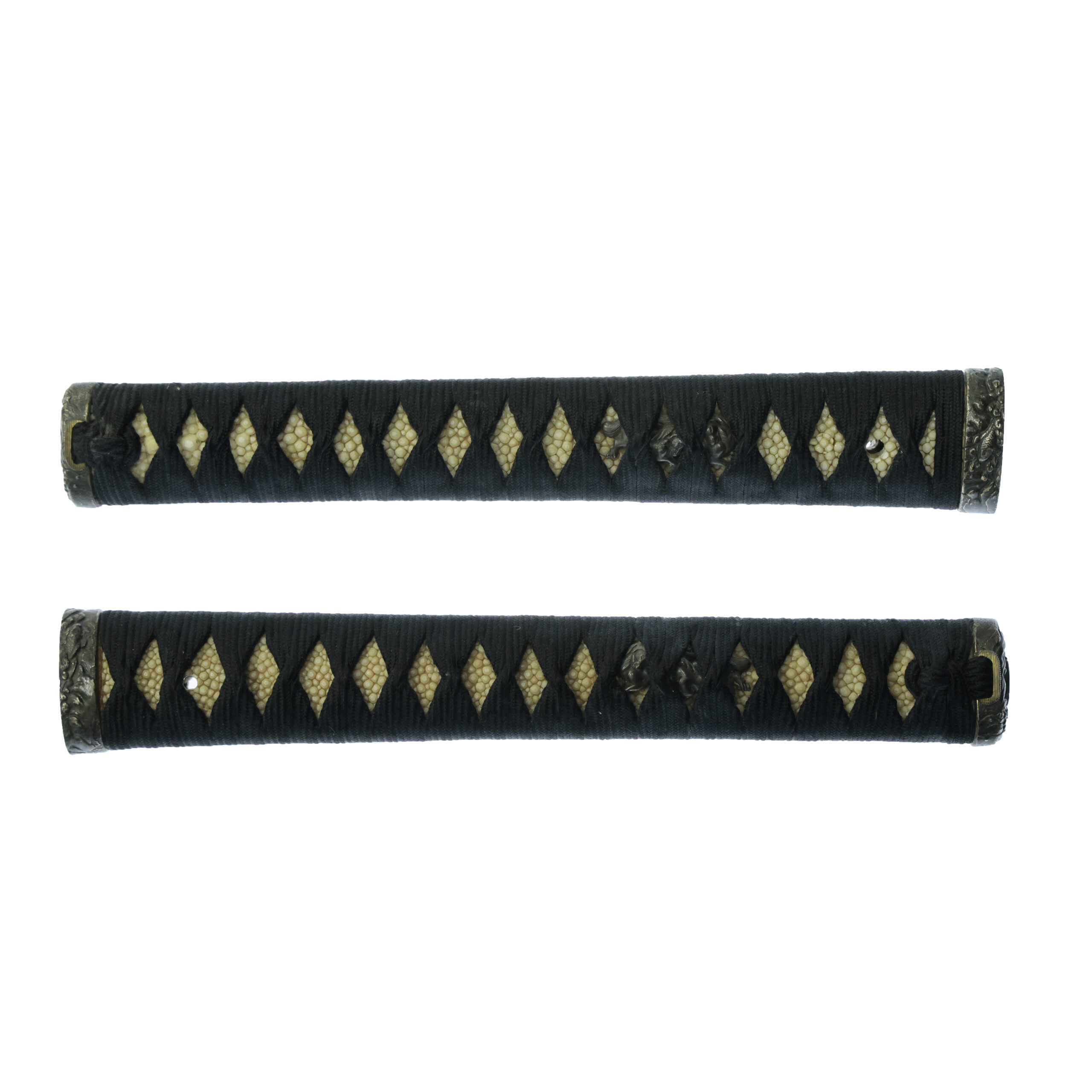
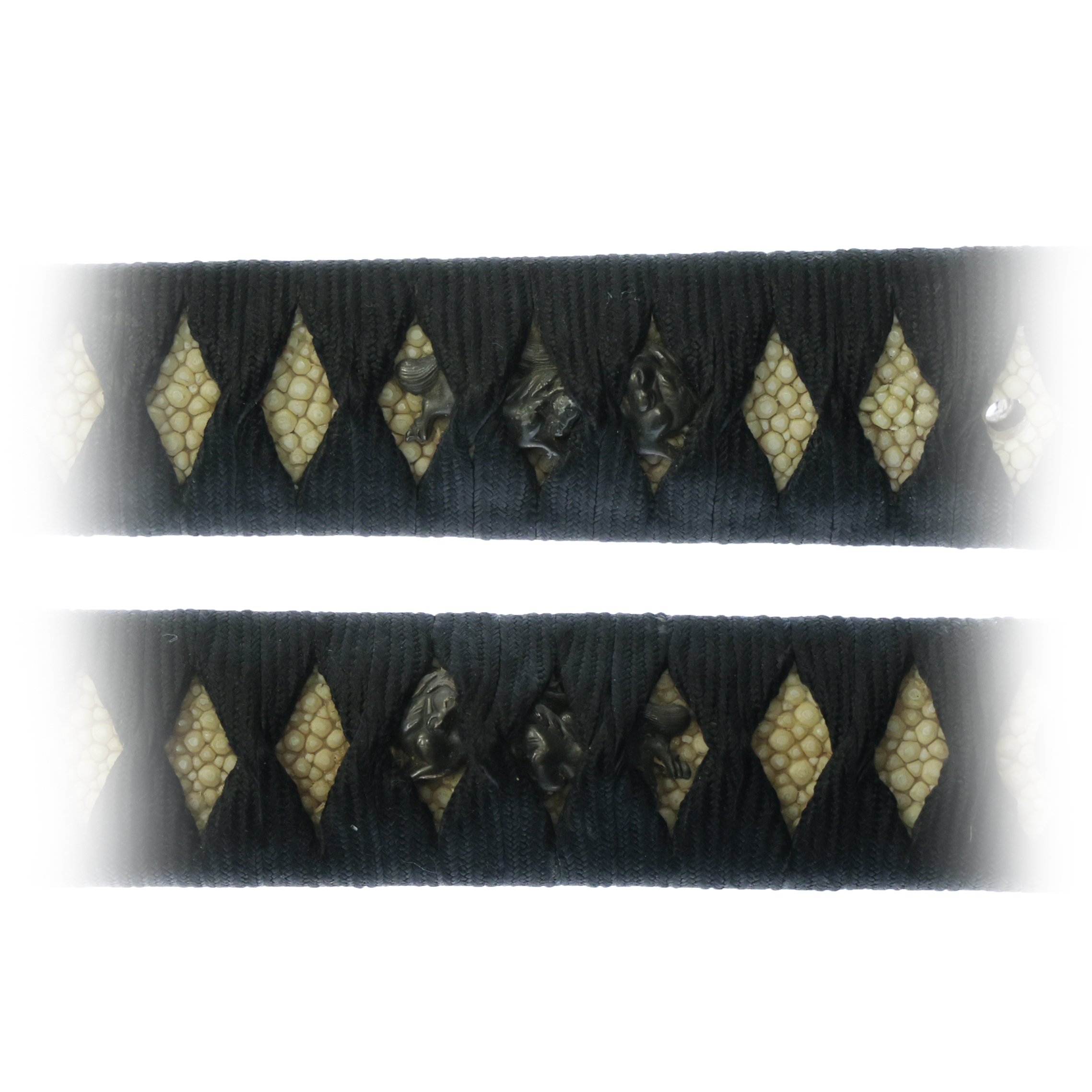
Tsuba and Habaki:Tsuba is the handguard for the Japanese Sword and Habaki is the equipment to make the blade not touch its scabbard inside. It prevents the blade from getting rusty and chipped.
The motif of this Tsuba is Hanabishi (花菱). Its petals are designed in a rhombus. This pattern became a Yusoku Monyou (有職文様, generic term for designs of court nobles’ clothing or furnishings, these designs have unique and elegant styles) during the Heian period (794-1185). And people loved it as an auspicious pattern.

Saya:Saya is the scabbard for the Japanese sword.
This scabbard is covered with black lacquer. Due to its high waterproof effect, lacquer has been used since ancient times in Asia. The blade of a Japanese sword is made of iron, and moisture is the greatest enemy of iron. For the purpose of carrying the blade without degrading it, people devised a method of coating the scabbard with lacquer. To prevent not only moisture but also rain and snow from penetrating the inside of the scabbard, it was necessary to apply multiple layers of lacquer. The Nushi (塗師, lacquerers) was born precisely because advanced techniques were required to handle the complicated processes.
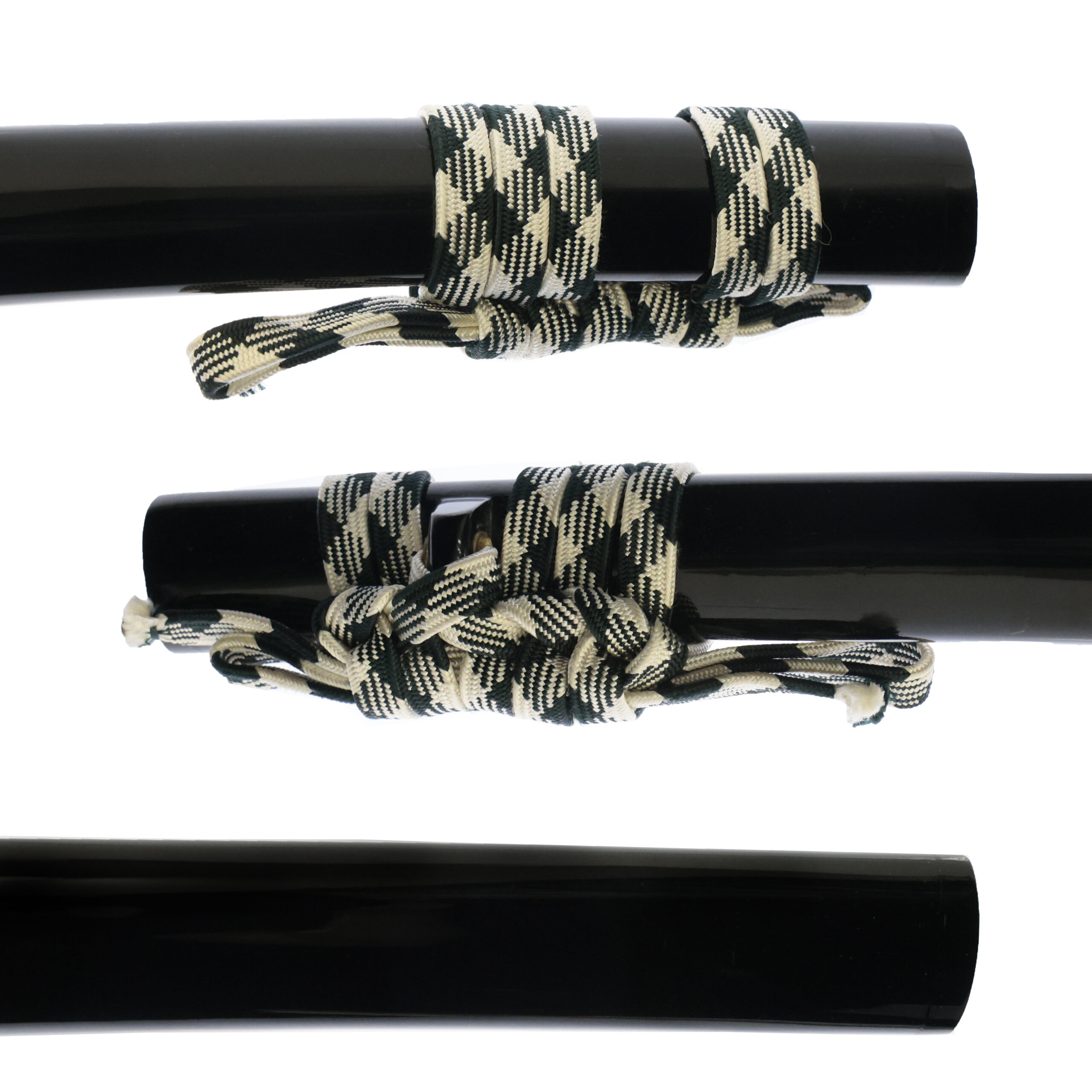
Authentication Paper:NBTHK TOKUBETSU Hozon Certificate for the blade (No. 1024233)
NBTHK, also known as Nihon Bijutsu Touken Hozon Kyokai (the Society for the Preservation of the Japan Art Sword), is one of the oldest Japanese sword appraising organizations in modern-day Japan. They authenticated the blade on February 21st in the 7th year of Reiwa (2025). They appraised it as Tokubetsu Hozon Touken, the blade especially worth preserving for Japanese society. The purchaser will receive this original certificate as well. We can also translate what is written into English and make a PDF file for your record if you request.
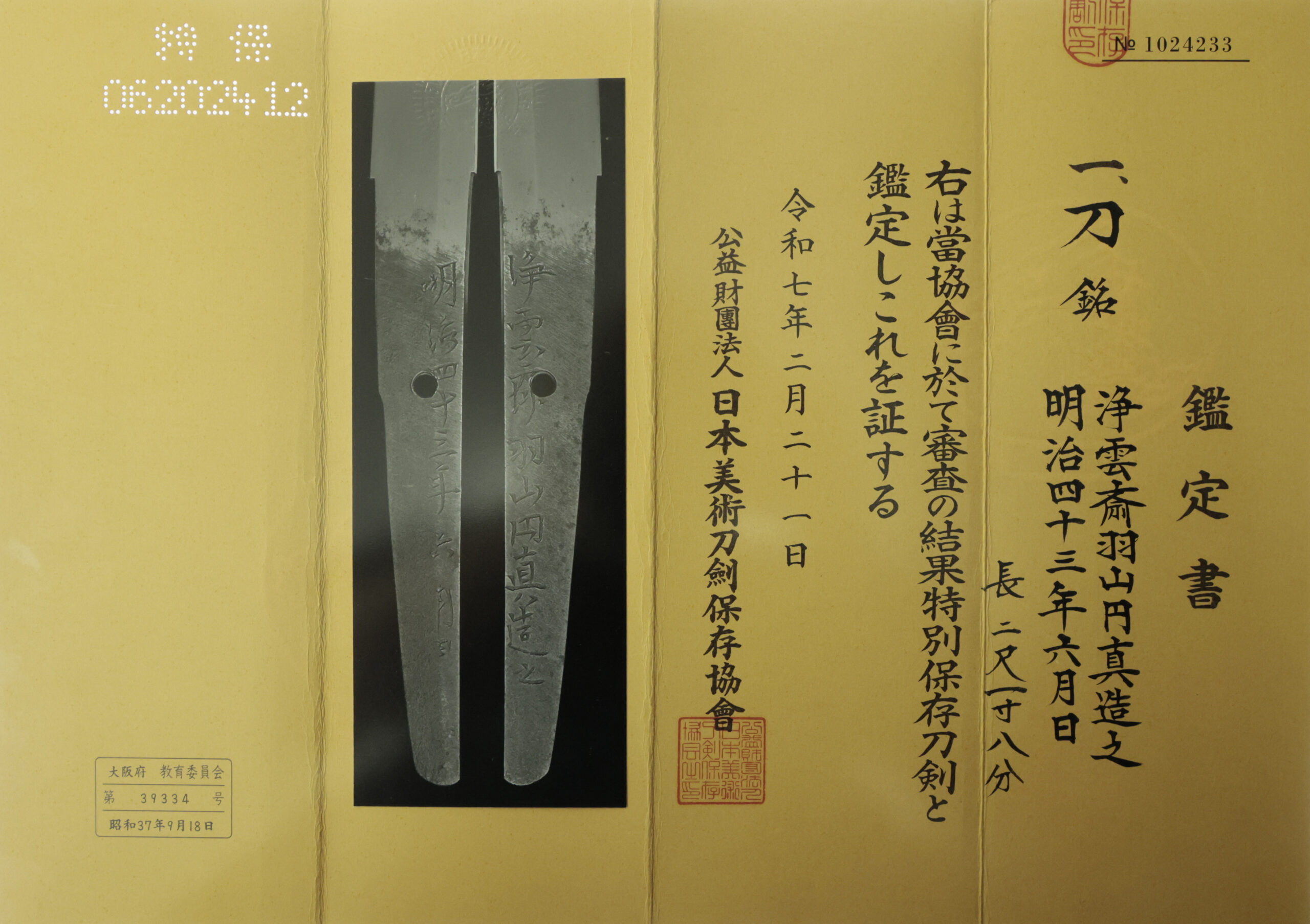
Registration Number : Osaka 39334
The Board of Education in Osaka issued a registration paper for this sword. It is called Jyu Hou Token Rui Tourokusho (銃砲刀剣類登録証). Bunkacho (The Agency for Cultural Affairs) acknowledges a Japanese sword with this paper as a work of art.
The sword needs to be traditionally hand-forged and made of Tamahagane carbon steel to be registered in the system. With this paper, its owner in Japan can legally own an authentic Japanese sword. Based on this registration number, we will apply for its export permit.
This paper will need to be returned to the board of education when the sword is being shipped abroad, but you can receive a copy of it. An English translation of this registration paper is available on request.

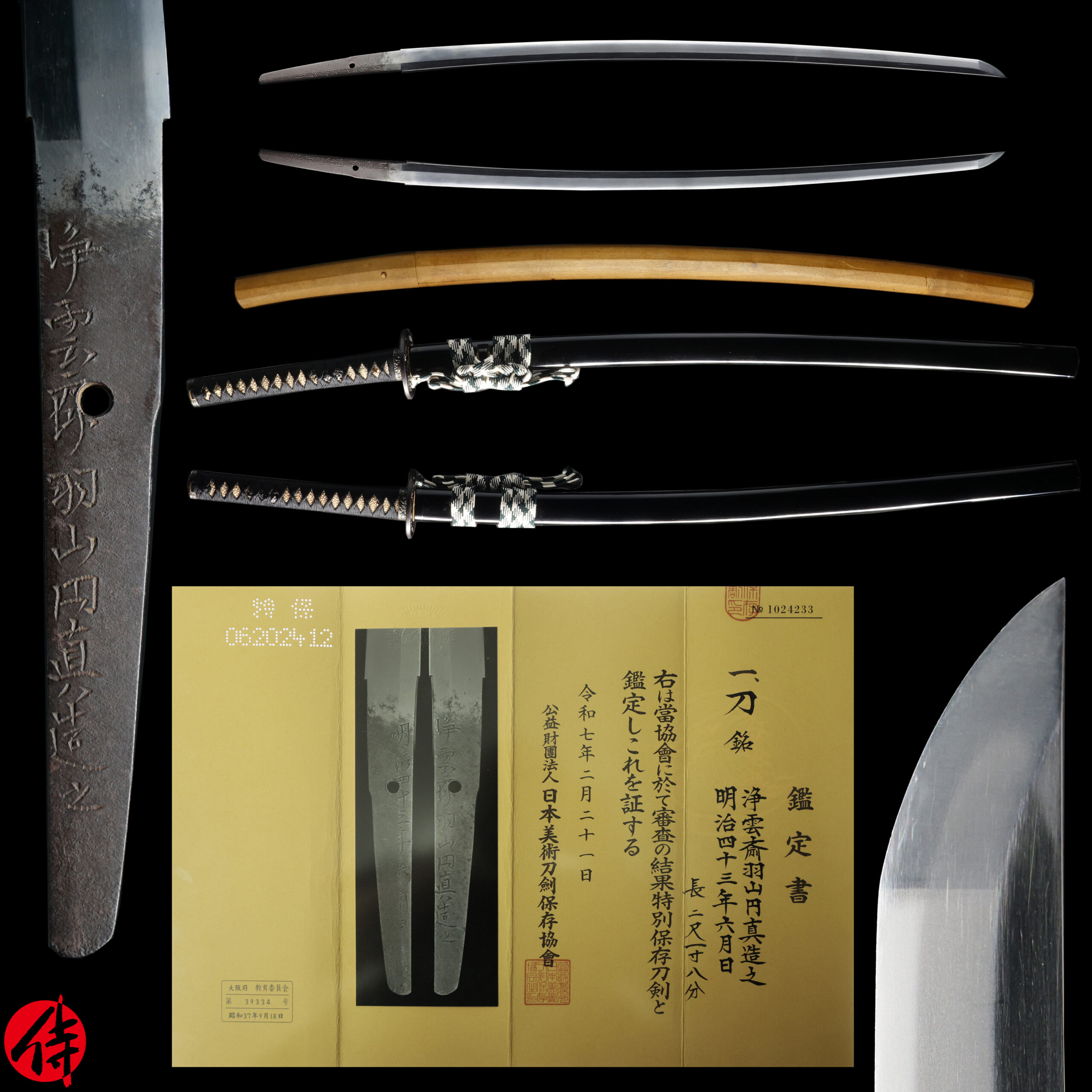
—————————————————————–
【About us】
Samurai Museum is located in Tokyo, Japan, exhibiting antique artifacts related to the Samurai history. Samurai Museum Shop is the place for those who are interested in Japanese culture and craftsmanship. We deal with antique Samurai swords/armor, traditional crafts made in Japan and so on.
【Japanese Sword& Export Process】
The Japanese swords we deal with are hand-forged edged swords made in Japan. It was made from the traditional carbon steel called TAMAHAGANE(玉鋼). Samurai Museum is familiar with the proper legal procedure for an antique/ authentic Japanese sword to be exported from Japan. We have sent more than 1000 Japanese swords for the past few years (~2025) to amazing owners who appreciate its historical value.
Each Japanese sword is registered under the Agency for Cultural Affairs and the Board of Education in Japan. They issue a registration paper for each Japanese sword for its owner in Japan to legally possess it. The Japanese sword with its registration paper means it was traditionally hand-forged in Japan.
To legally export the sword from Japan to other countries, we will have to apply for its permit to the Agency for Cultural Affairs(Bunkacho) and return the original registration paper to the Board of Education. It normally takes around 2-4 weeks to receive this permit after submitting required documents. And we would like you to expect at least 1-1.5 months for your order to arrive at your given address after you ordered. For more detailed info, please click here.
It is allowed for residents in Japan to own authentic Japanese swords without a special license as long as they come with registration papers. Please feel free to contact us if you are a resident of Japan, whether temporarily or permanently. We will also assist you when you leave Japan and need to obtain the export permit.
【Payment Method】
We accept payment through Stripe (Credit card), PayPal, Apple Pay or ChromePay, all of which are secure payment methods. Also, you don’t need to make an account on Stripe for the checkout. If you prefer other payment method, please contact us. After confirming your payment, we will apply for an export permit. You may either pay in JPY, USD, AUD, CAD,EUR CHF or GBP. The price is set in Japanese Yen. Prices in other currencies are automatically calculated based on the latest exchange rate.

* If the amount is above 1 million JPY, Stripe or wire transfer will be the only options for payment.
【Shipping】
We have shipped authentic Japanese swords to the USA, Canada, Mexico, Germany , Belgium, France, Finland, UK,Hong Kong, Australia. If you don’t live in these countries and like to order, please contact us first before making a purchase. We offer Free International Shipping as long as we can send antique Japanese swords by EMS.
We normally ship by EMS(Express Mail Service) provided by Japan Post. We will send you a tracking number for your order as soon as we hand it to the post office. We will put 100 % insurance on the shipping document without any extra charge. Based on the total amount, there might be a duty tax or other fee for you to pay, depending on the countries. We use package cushioning to protect the item and put it in a PVC pipe, which is one of the most secure packages because of its durability.
It will normally takes 5-14 days for the item to arrive at your given address after we dispatch it. Time of delivery is estimated as accurately as possible by the carrier but does not take into account any delays beyond our control such as by inclement weather, post office holiday seasons.
* If you live in Australia and like to purchase an authentic Japanese sword, please click here to know the detail.
* If you live in the UK and like to purchase an authentic Japanese sword, please contact us first and click here to know the detail.

【Review】
Here is one of the reviews we received from a customer who purchased an authentic Japanese sword from us. For more reviews, please click here.
“My experience overall with the whole process was wonderful. I had many questions about the history and process to purchase these treasures. All my questions were answered very timely and complete. The staff is very knowledgeable and very well versed if any questions do arise.”
【How to make sure the condition】
Please keep in mind that what you are going to purchase is an antique item. We uploaded high resolution photos for you to check its condition thoroughly. If you like to see more photos with different angles, please feel free to contact us. We will be happy to send them to you so that you can make informed decision. It is essential for us to know that you are happy with your choice of a sword. and we are prepared to use the best of our ability to serve you.
【How To Contact Us】
Please contact us through email, Facebook Messenger or Live Chat if you have any questions. You can find each icon on the right side of the website. Please click one of them to reach us. We will reply to you within 1-2 business days.
【The Art of Nihonto (Japanese Sword)】
Samurai’s history is a profound, eloquent legacy of ancient Japanese warriors in which millions of people worldwide are being fascinated. If you like to find out the art of Nihonto, please click here.
【A Guide to Japanese Sword Maintenance】
After acquiring an genuine Japanese sword, it is also important to know how to take good care of it. Here is the special video for you. Mr. Paul Martin, Japanese sword expert, shows you how to give proper maintenance to your sword. By mastering how to clean the Japanese sword, its aesthetic beauty will last forever.
When you purchase a Japanese sword from us, you can get a Free Japanese sword maintenance kit. It comes with four tools(Choji Oil, Uchiko Whetstone Powder, Peg remover, Oil Applicator). By watching the video instruction above , you can enjoy learning how to maintain your Japanese sword while appreciating it. If you have any difficulty assembling the sword or cleaning the blade, you can feel free to contact us.

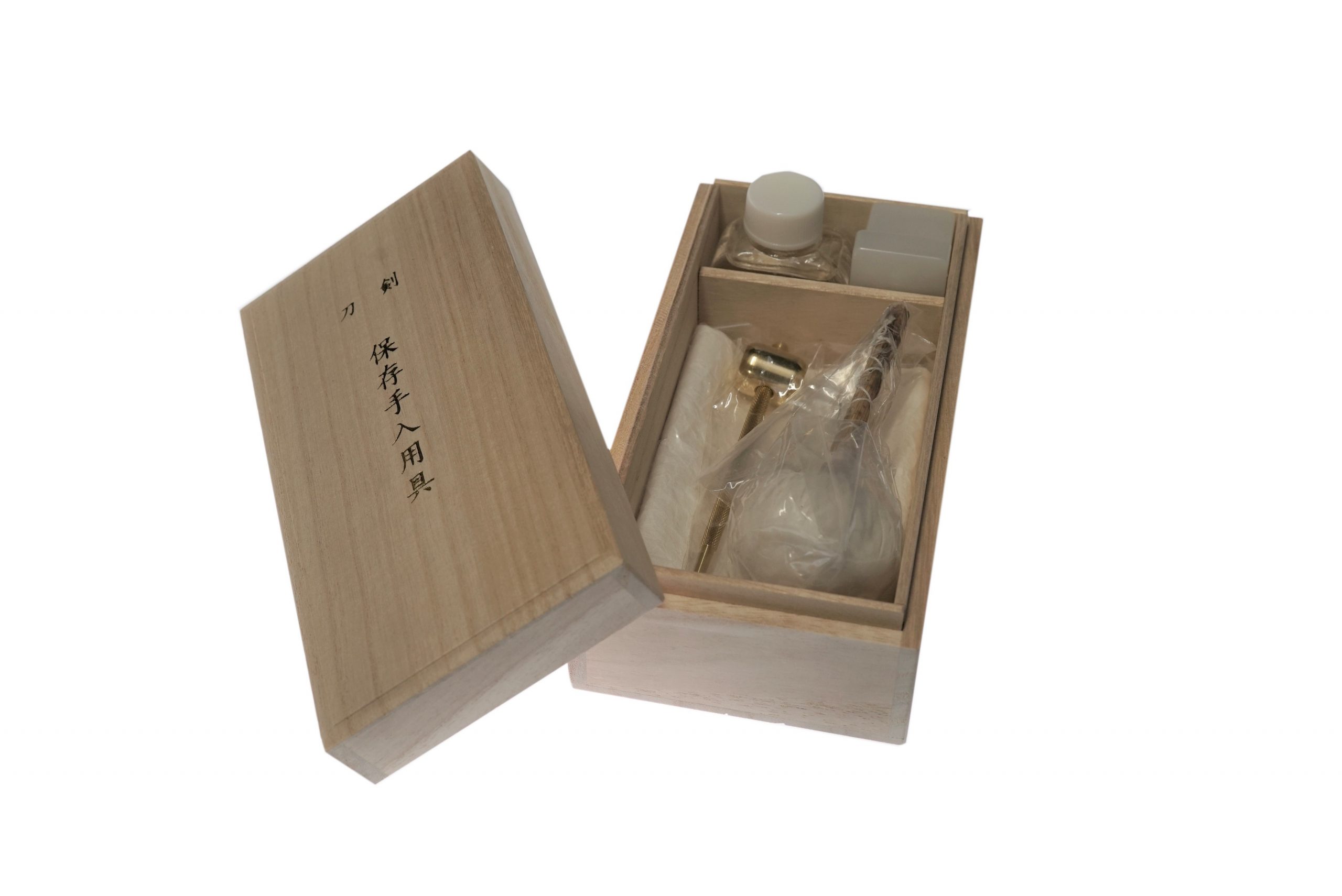
MORE ANTIQUE JAPANESE SWORD FOR SALE
SWORDS WITHOUT CERTIFICATES FOR SALE
LEARN JAPANESE SWORD TERMINOLOGY
Thank you for reading all the information on the page. If you have any difficulty choosing the right Japanese sword for you, we will be more than happy to help you find the one that speaks to you the most. Please feel free to contact us.
